September 23
Whole Pig: PR60T Pig Roaster vs TS250 Tank Smoker
0 comments
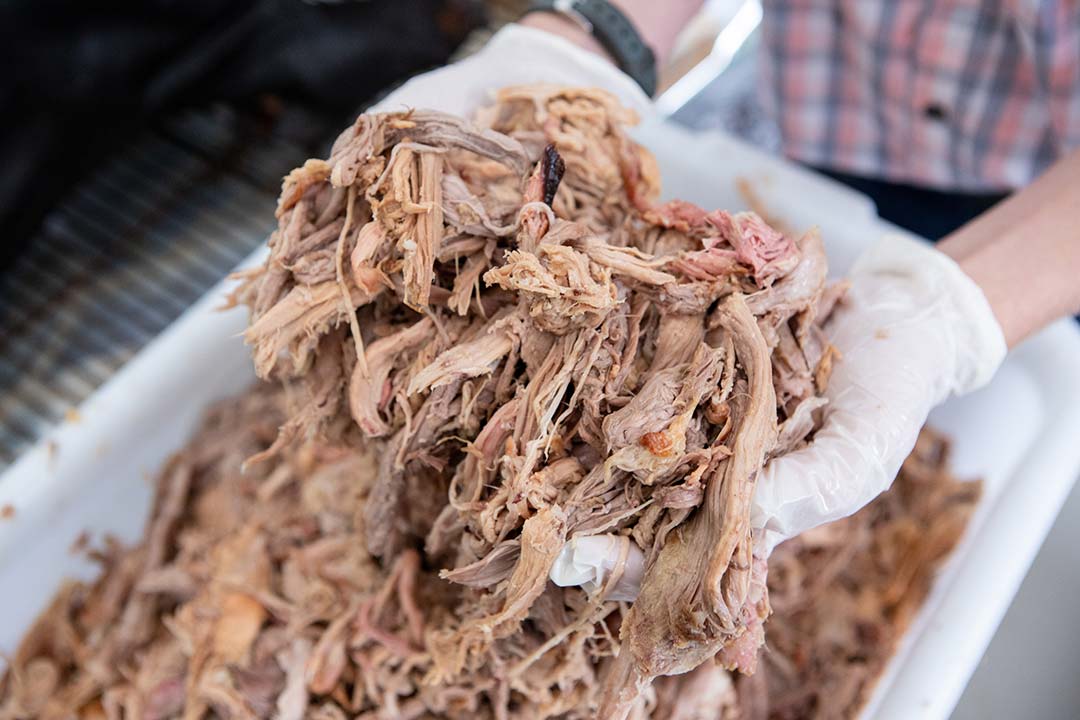
Tender and juicy pulled pork cooked on the Meadow Creek PR60T Pig Roaster and ready to heap generously onto rolls for hundreds of delightful sandwiches.
Several weeks ago, we had the privilege of cooking two Duroc pigs for a friend of mine. I don't have an exact weight on them, but according to my friend, the live weight was around 190 pounds.
Instead of cooking them in the PR60T on two separate days, I decided to tackle them both at once, cooking the second one in Big Black, my decked out TS250 tank smoker.
My friend wanted the meat pulled, vacuum sealed, and frozen for an event he's hosting in October. If you came here to see a grand presentation, I apologize. We didn't take the time to decorate our pigs with baseball caps, apples, or fancy arrangements of kale.
This cook was the most adventurous cook I've done so far. Perhaps even the most stressful. I should mention this was an all-night cook, so I was bracing myself for a night of babysitting the tank smoker. And even though we tried to plan the cook when it wasn't too stormy, as fate would have it, we got dumped with rain from Hurricane Ida. At times the rain was heavy, and if you've ever worked under a small canopy at night in pouring rain, you know the sense of vulnerability that can give you.
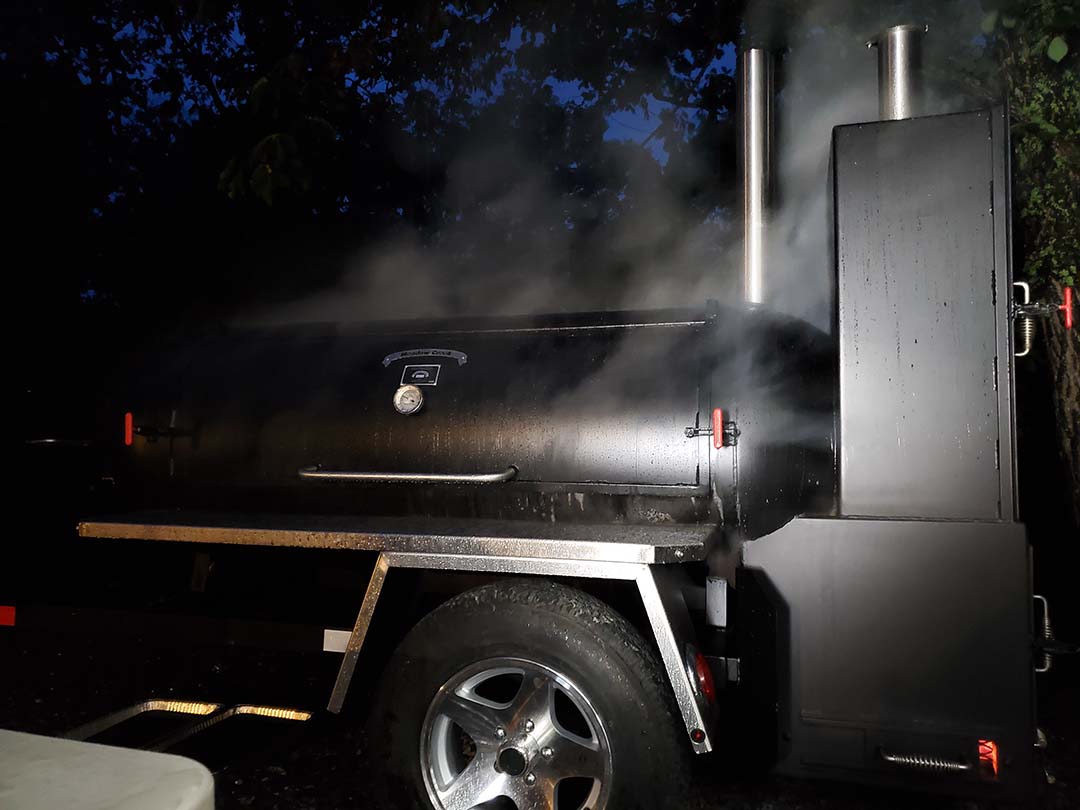
As heavy rain pounded Big Black, hissing and steaming, I wasn't sure which would win—the smoker or the opposing forces of the rain. The tank was so cold I could easily lay my hand on it. However, I'm proud to say that the smoker did a fine job. I am pretty sure it took more fuel because of the rain, but the TS250 pig finished only about an hour after the PR60 pig, so it all worked out great.
Because of working in the rain and in the middle of the night, I didn't bother wrapping the pigs in foil. This technique would have helped the skin stay lighter and shield the belly meat from the heat. However, I decided it wasn't worth the extra work this time. You will notice the pigs turned quite black.
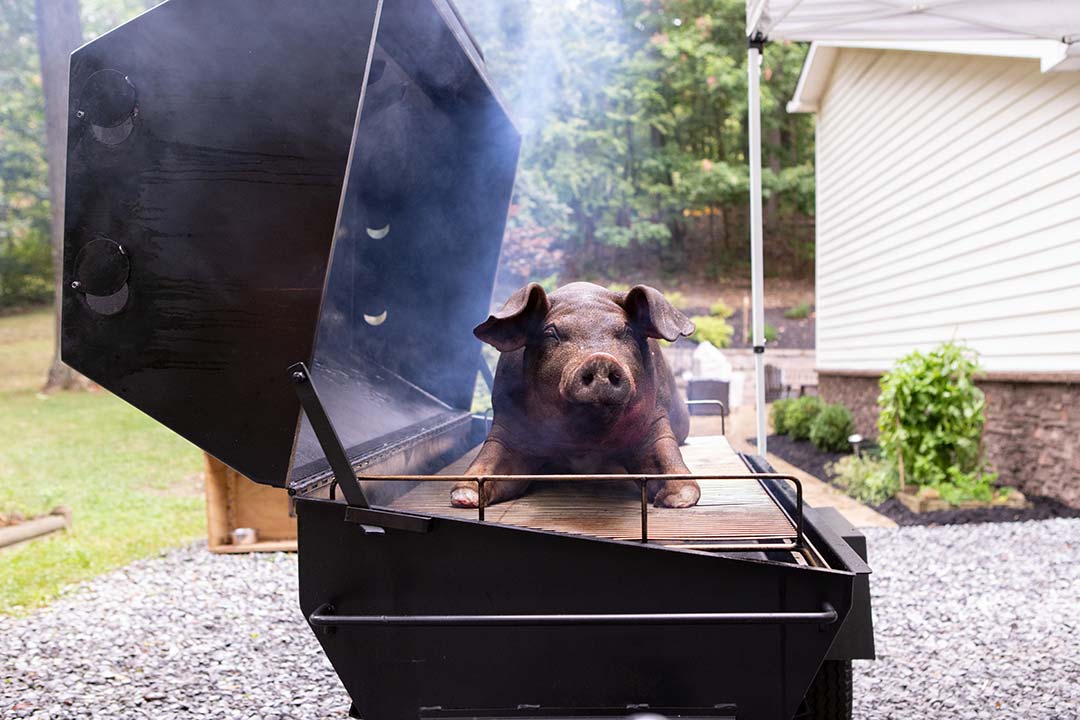
Whole Pig on PR60T
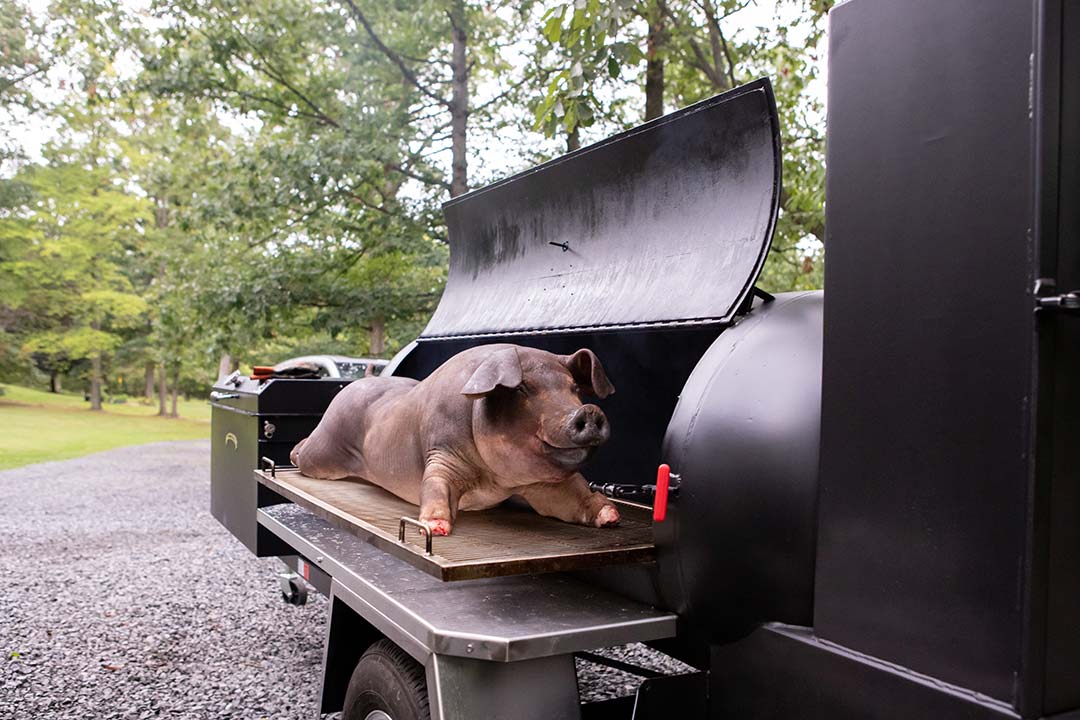
Whole Pig on TS250
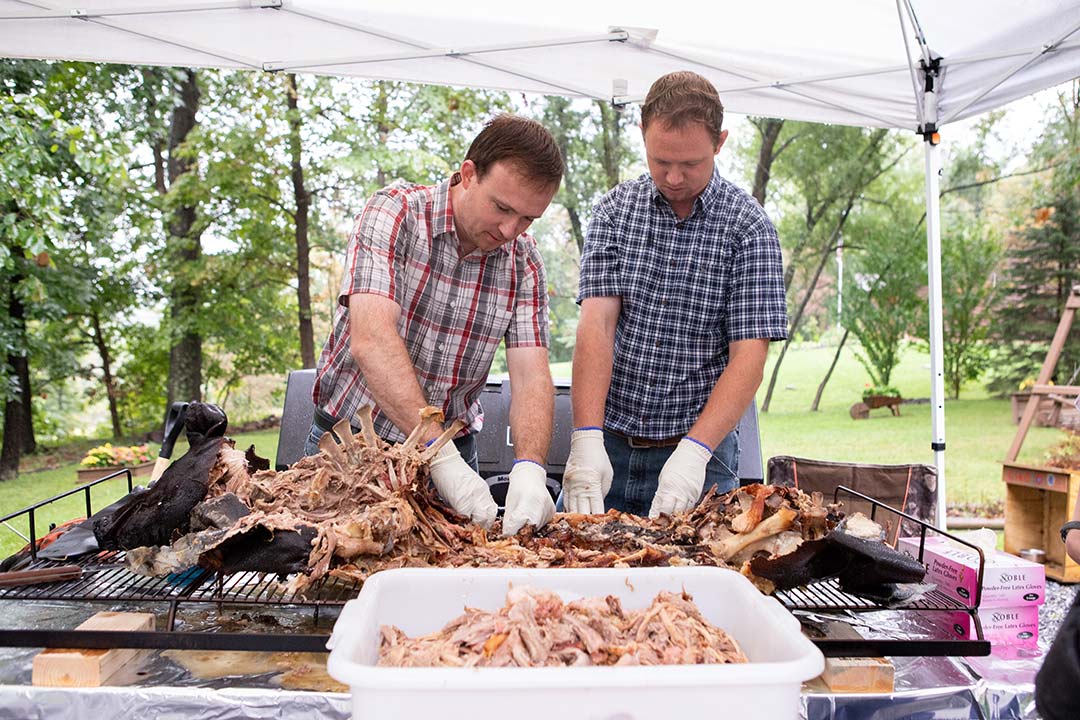
Would you like to tackle cooking a whole pig? Roasting a whole pig feels a bit daunting at first, but it's not hard with the right equipment and a solid plan.
Here are a couple of guides to help you cook a whole pig with confidence:
Beginner Guide: How to Roast a Whole Pig in a Meadow Creek Pig Roaster
The success of your first pig roast depends largely on your equipment and a solid plan. Common mistakes when roasting a whole pig often cause stress and frustration, such as burning the meat, not being able to serve your guests, or dealing with the meat in the middle of the night. This guide will help you plan a successful pig roast and cook it with confidence.
How to Roast a Whole Pig Belly-Up on a Meadow Creek Pig Roaster
In this guide you will learn how to cook a whole pig belly-up on a Meadow Creek Pig Roaster and make some of the most tender and delicious pulled pork you've ever tasted—even on your first try!

“The construction of the PR60 is unbelievably tight and held heat better than I expected. We can't wait til we can have 70 more people over for BBQ.”
- KGJ -
For pig #1, I’m using my Meadow Creek PR60T Pig Roaster fired with 80 pounds of 100% hardwood charcoal briquettes and splits of seasoned hardwood from my wood pile.
Note: For detailed instructions on how to fire a Meadow Creek PR60, check out my beginner's guide on how to roast a whole pig.
My target temperature was 275 degrees F, but near the start of the cook, I let it get too hot, so part of the time the roaster was running at around 350 until I could get it calmed down.
There are some important variables to consider when firing one of these. How long you keep the torch on the charcoal and how long the lid is open makes a huge difference in how quickly the fire gets established. It's also tricky adjusting the vents during the first couple of hours after putting a whole pig on the roaster because the pig will drag the temperature down for a while. The best method is to give it a couple of hours to recover before messing with the vents.
My mistake this time was in adjusting the vents too much within the first 2 hours of the cook, and especially in not keeping a close eye on things after adjusting the vents. After putting the pig on, the roaster dropped to 225. It seemed to me that it might need more air, so I adjusted it. That might have been fine, but I carelessly gave it more air only 20 minutes later and left it like that for 45 minutes or longer. 3 hours into the cook, the roaster was at 325. In spite of throttling down the vents to correct the problem, the temperature rose even higher to 365 (10:30 pm). By 1:00 am it finally came down to 290 and at 3:30 it had settled down at 255 and stayed around 250 for the rest of the cook.
Moral of the story: Try to stabilize the roaster before adding pig and don't fiddle with it until it recovers. If you feel like it's going to need a boost, make small adjustments cautiously and watch the roaster's reaction carefully. It's not hard to run these roasters if you do this part right!
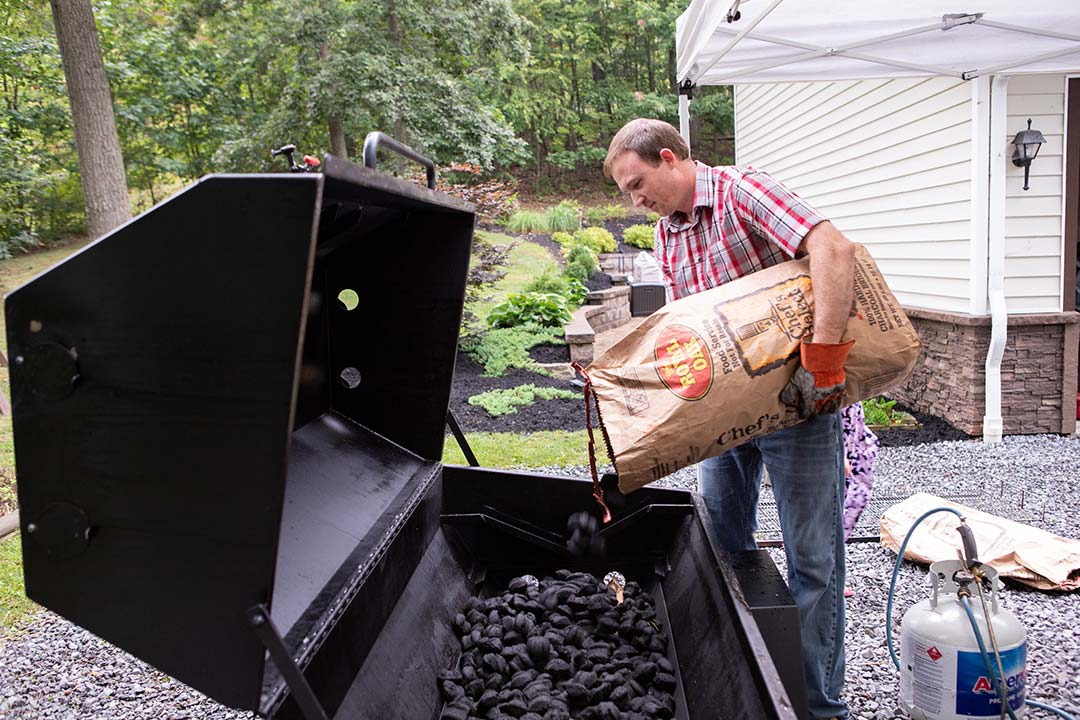
Adding 80 pounds of Royal Oak Chef's Select 100% hardwood charcoal briquettes
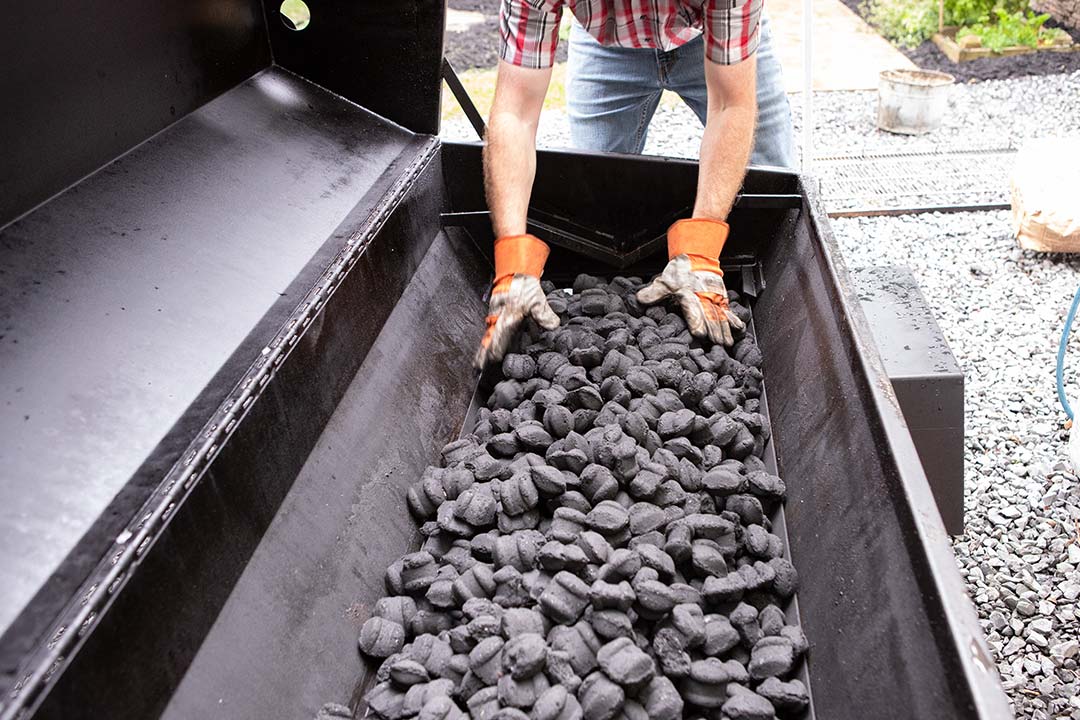
Charcoal added with 2 log splits buried in the charcoal, one in each end.
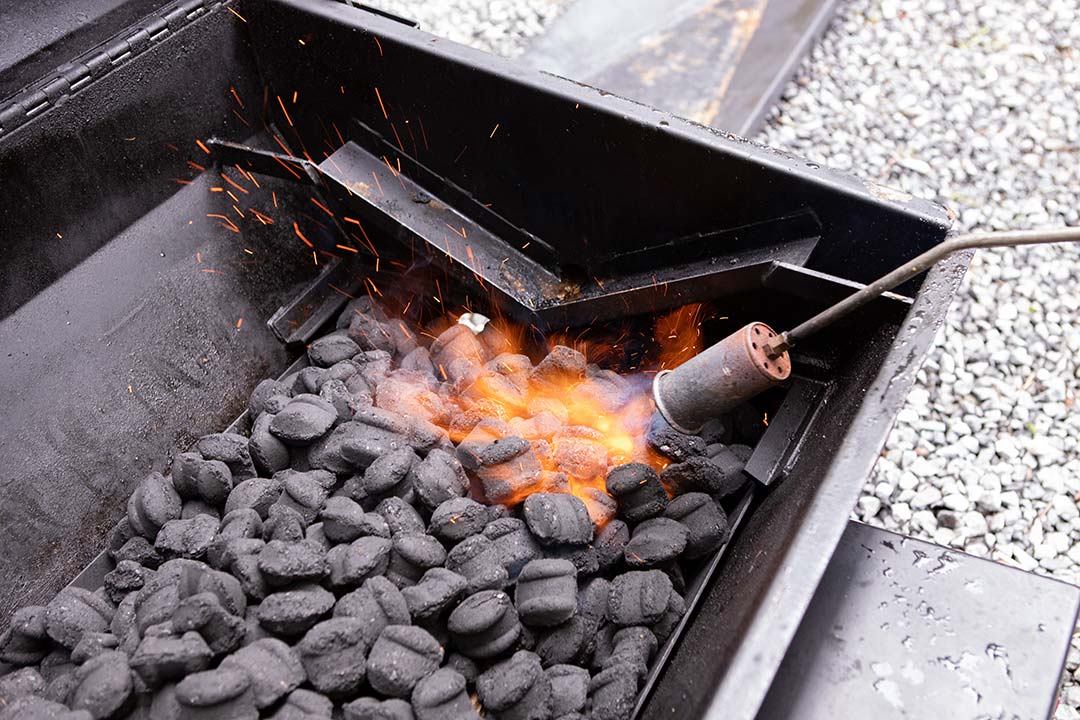
Lighting the charcoal with a torch
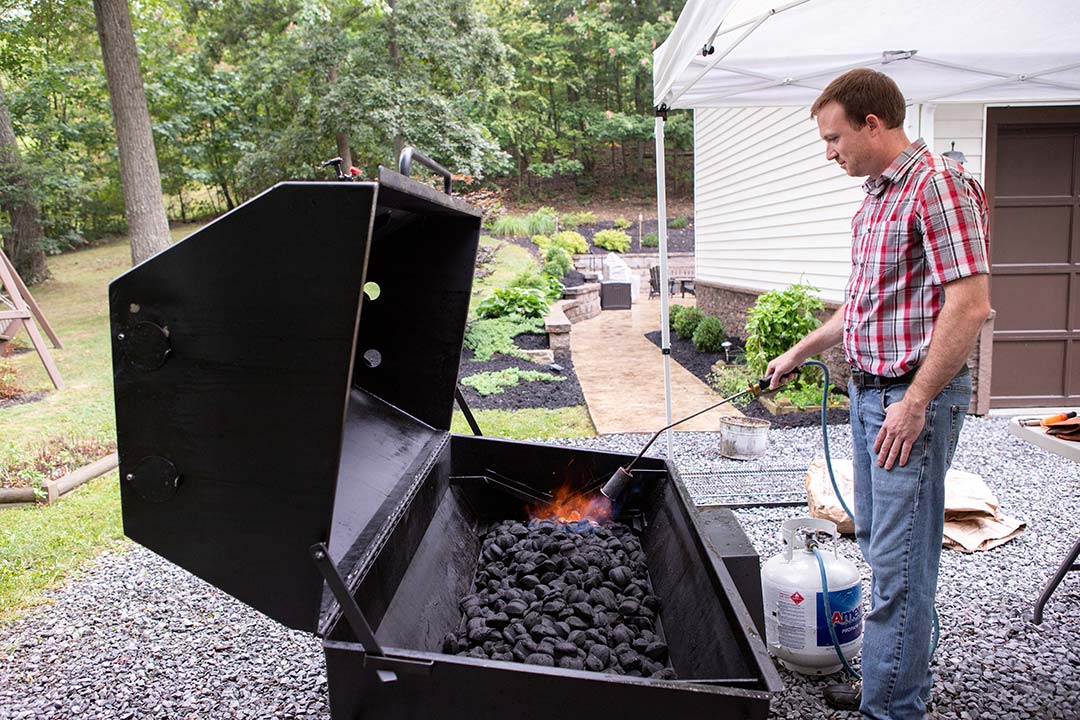
We light both ends
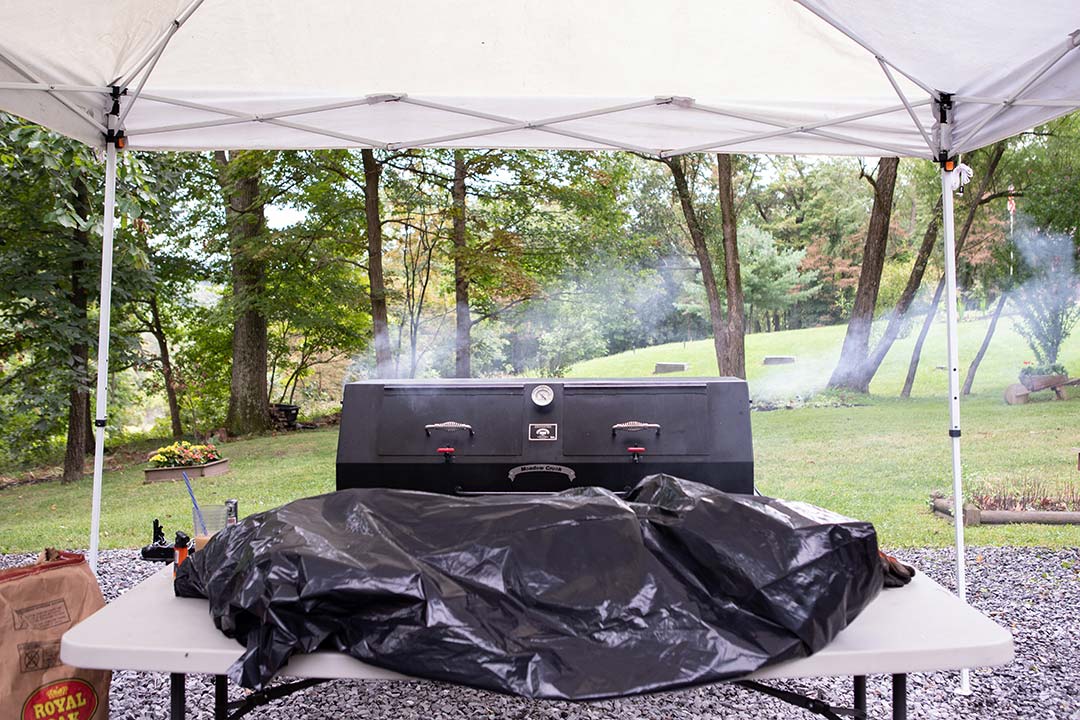
The pig
Once the pig roaster was fired, we simply had to set the pig onto the cooking grate and close the lid.
There was more than enough fuel in the roaster for the entire 13-hour cook, so the only thing to do was to keep the roaster temperature on track until the internal temperature of the shoulders reached 195 degrees.
When it was done, we carried the pig (on the grate) to my Lifetime table. The grate was hot, so we set it on some 2x4 blocks to avoid melting the table.
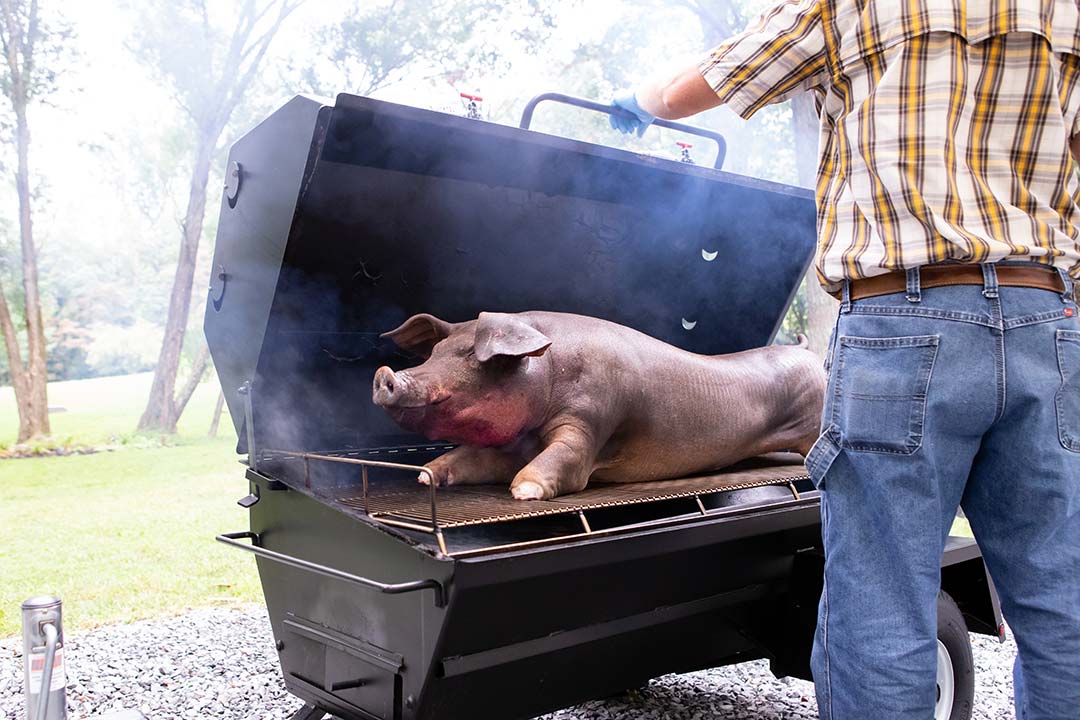
Pig #1 is on the PR60T

Hi, piggy!
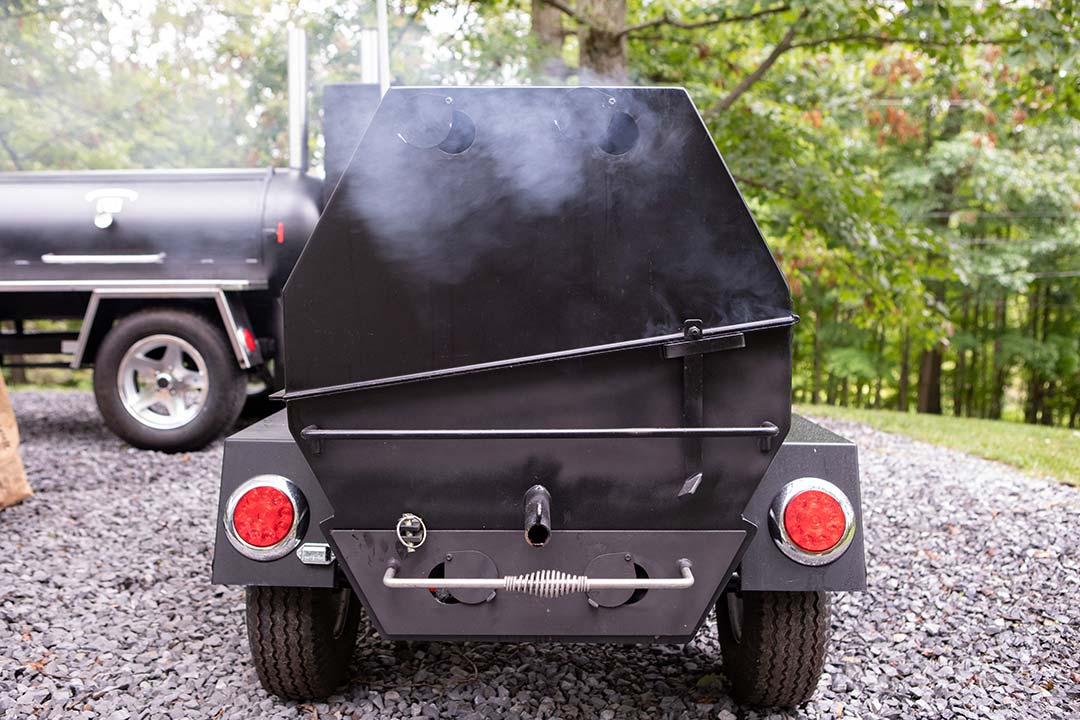
End view of the PR60T
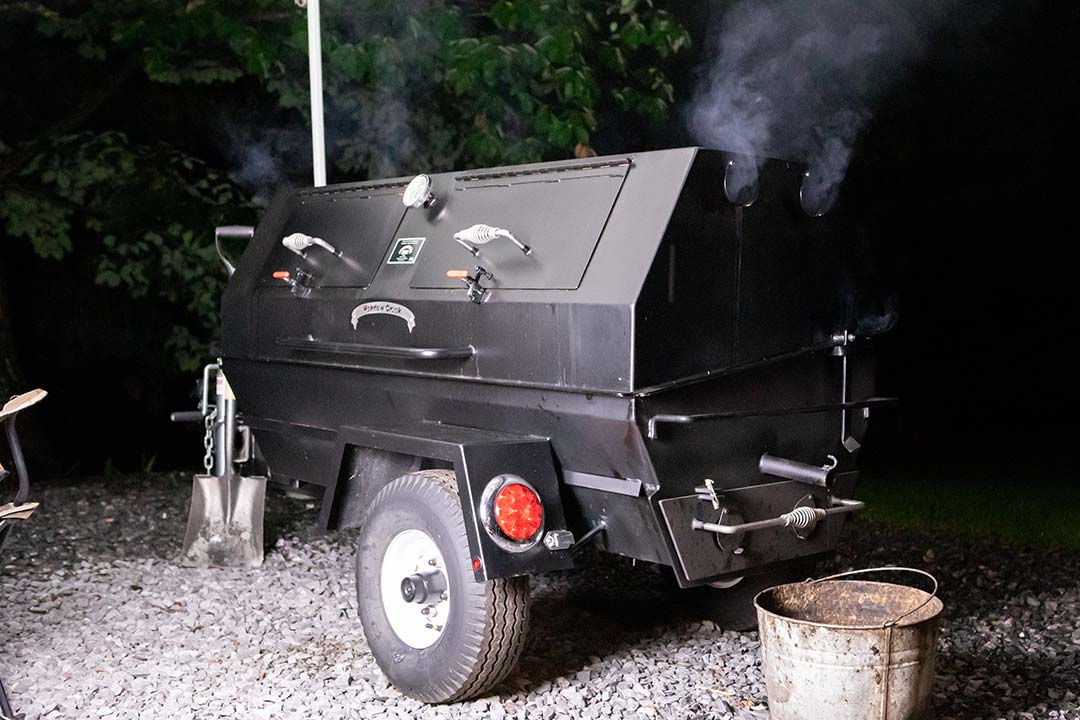
Cruising along at midnight
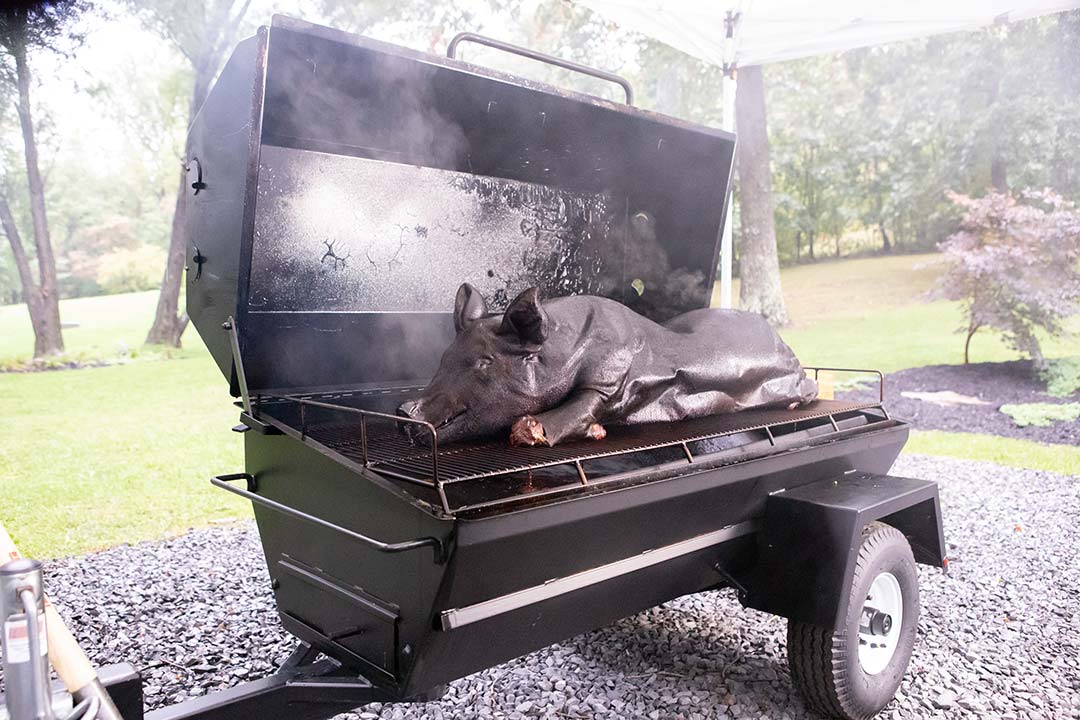
7:00 the next morning
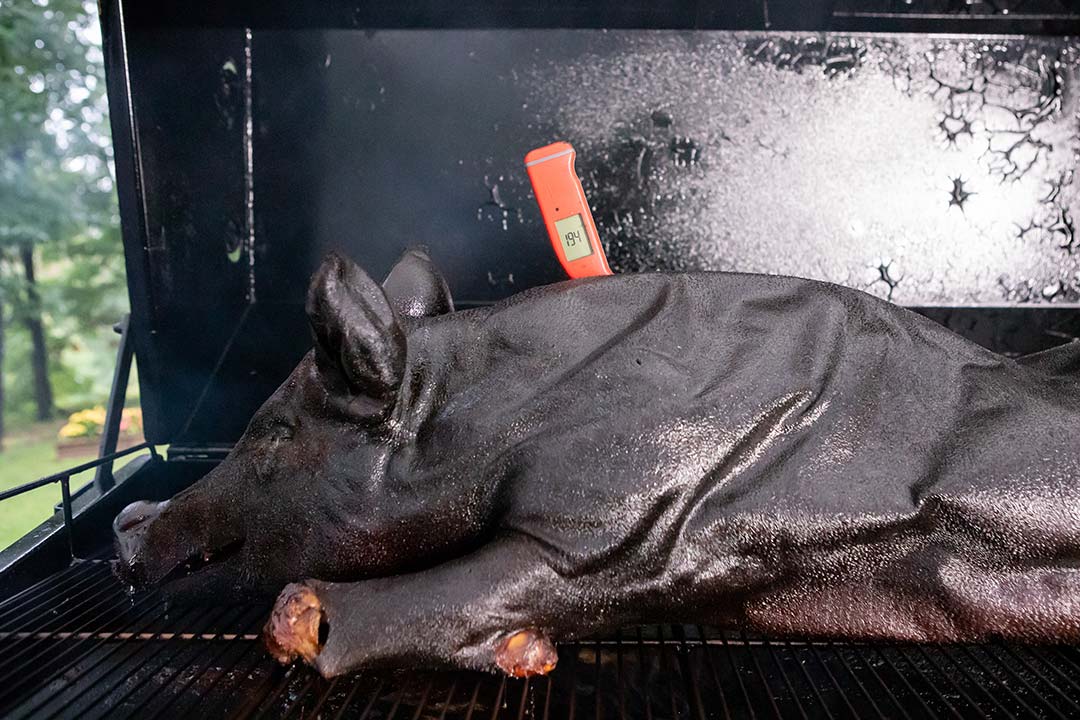
Ready to remove and rest
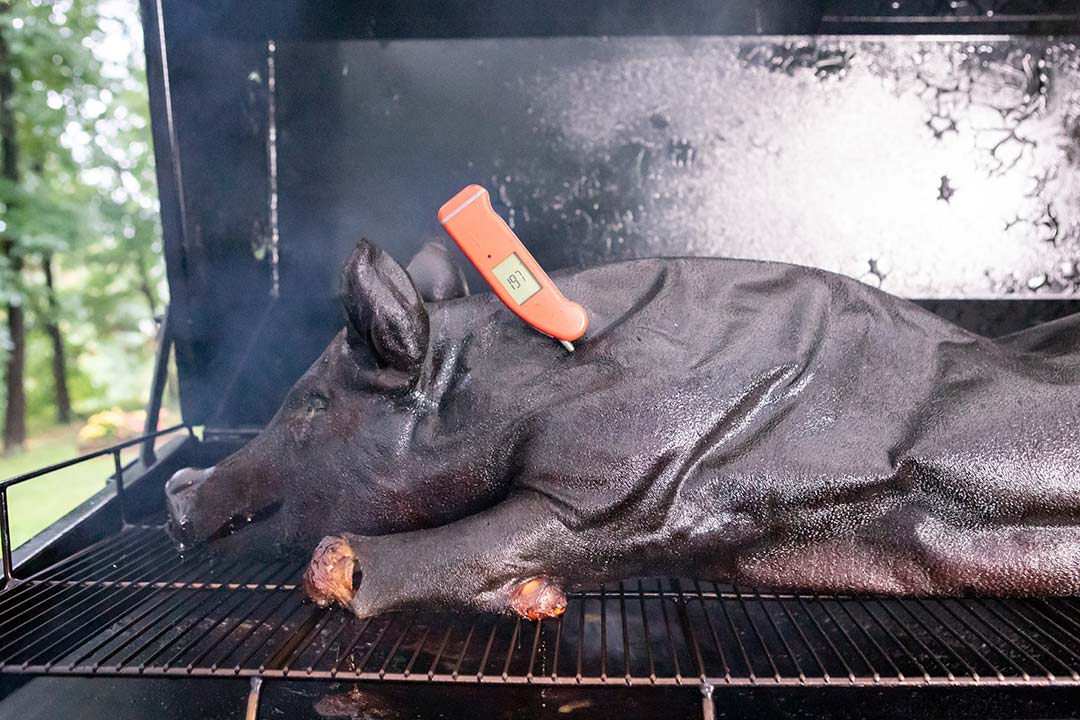
195ish in the shoulders
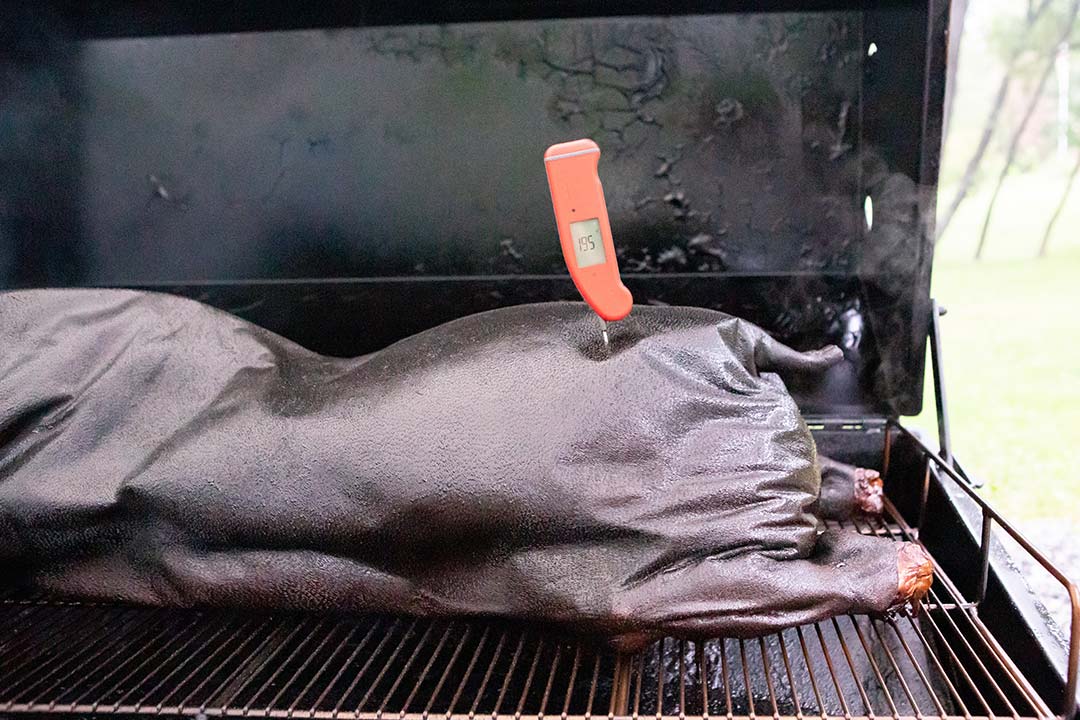
195 in the ham
My target temperature for the TS250 was 275 degrees but because of the rain and the large mass of cold meat, I decided to aim for 225–250. I was concerned the pig would take a lot longer to cook, but it really was the best plan of action because of the rain, especially in the early part of the cook when the smoker had to work especially hard to heat up the large mass of cold meat.
Typically I would add more fuel to the smoker every hour or so (either a log split or a few shovelfuls of charcoal), but I didn't want to get up every hour or sit up the entire night. Big Black has an insulated firebox and charcoal basket, so I decided to add more fuel and stretch out my refueling times to every 2.5 hours. It worked pretty well too. There was more fluctuation in the temperature, but at least I didn't feel like an empty charcoal bag when it was time to pull the meat!
I used 120 pounds of Chef's Select charcoal and only several pieces of wood. If I had used more wood, I could have gotten by with 80 pounds of charcoal.
Here's a timeline of the TS250 pig cook:
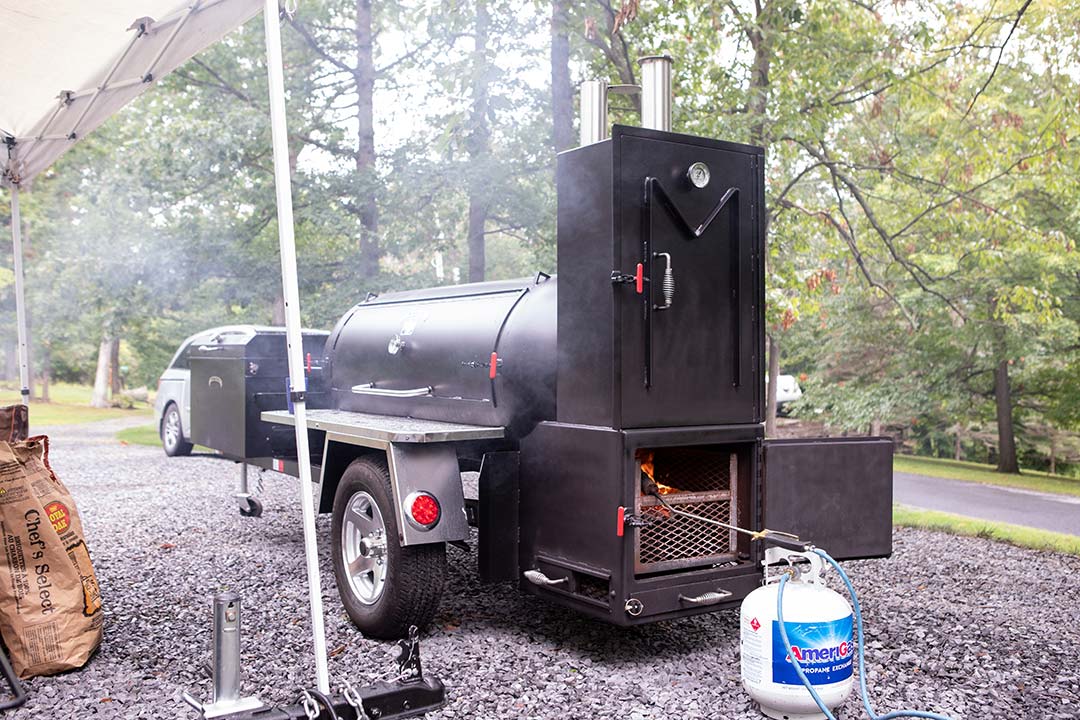
Firing the TS250
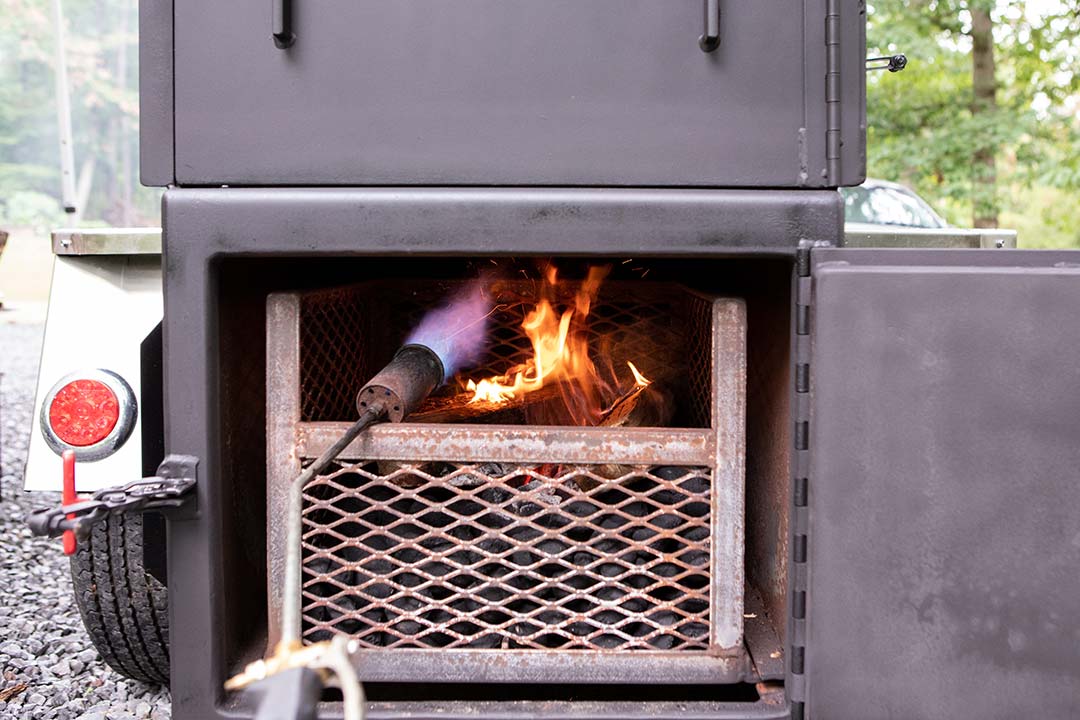
Heating up the tank with the torch aimed at the tank opening
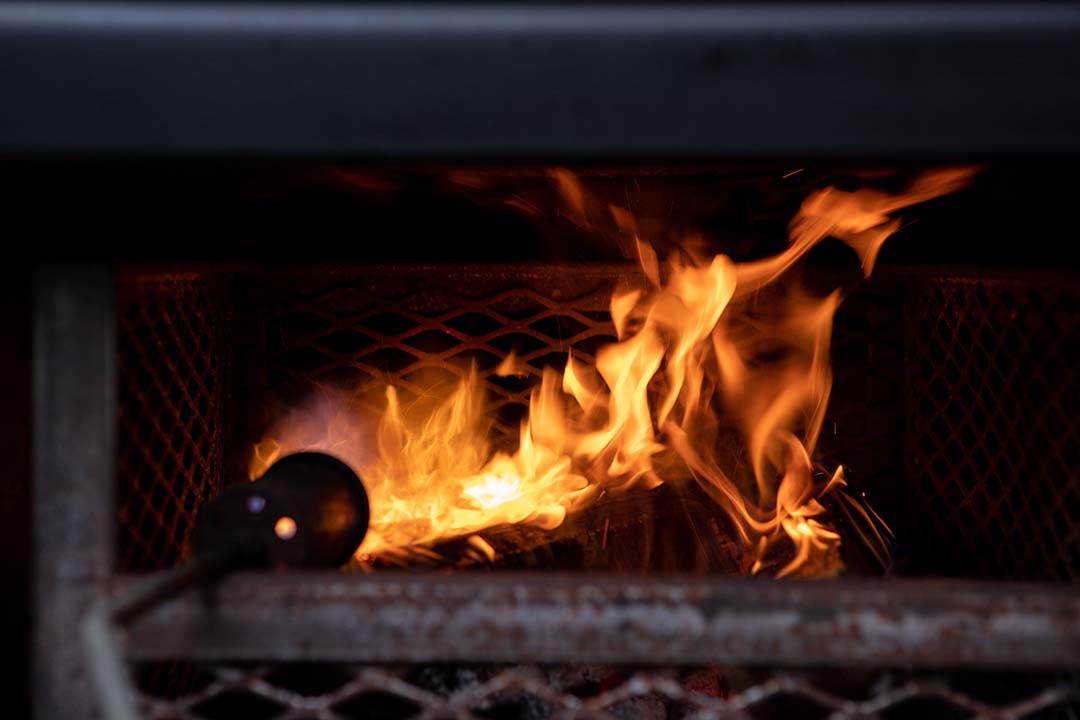
Lighting the wood and charcoal
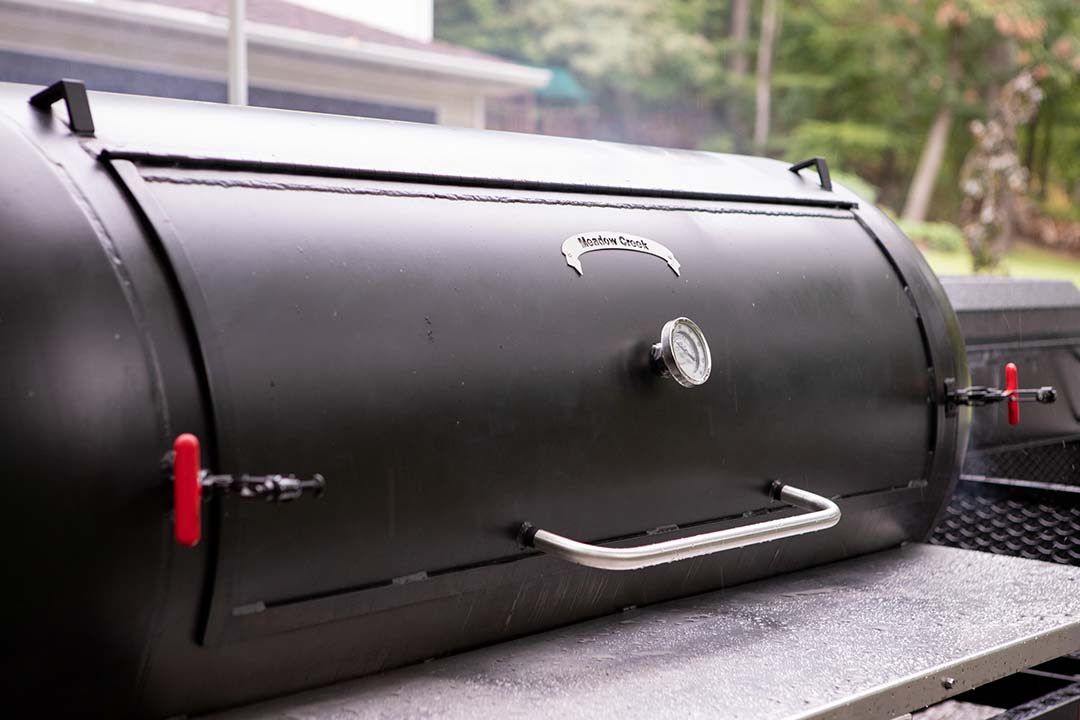
Getting up to temperature
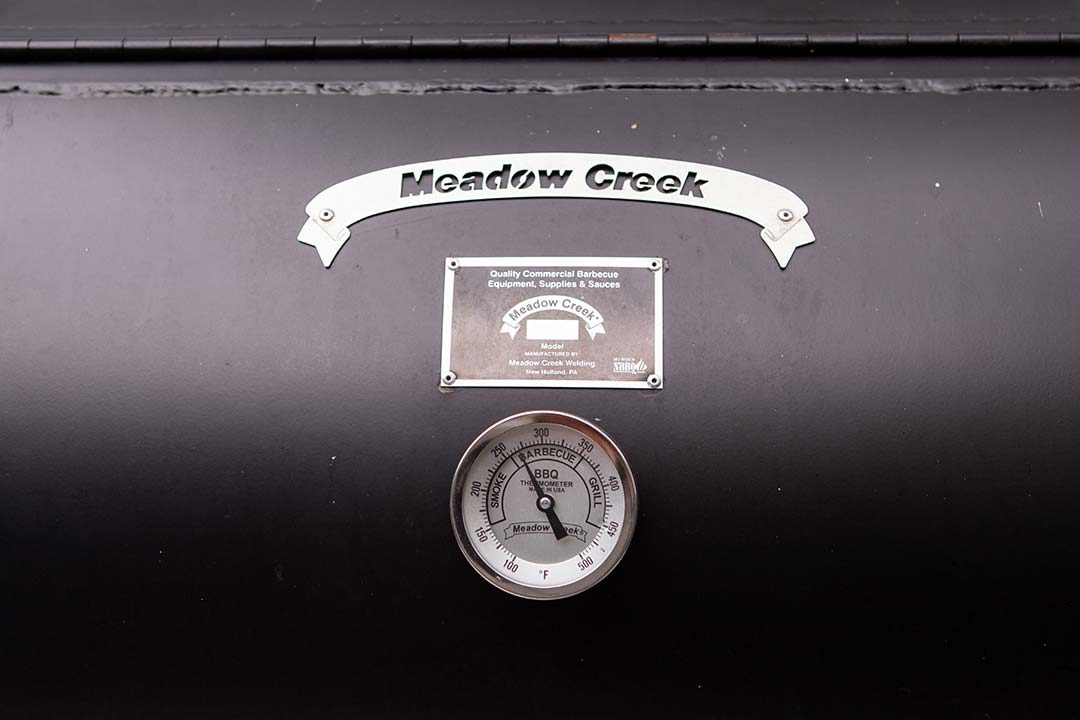
With the smoker up to temp and the top grate removed, we slid pig #2 onto the bottom grate. From there I kept feeding the smoker charcoal and wood until the shoulders reached an internal temperature of 195 degrees F.
This pig was done before we were finished pulling pig #1, so we opened the smoker doors to cool it down and give the pig some time to rest while we finished using the table for the other pig.
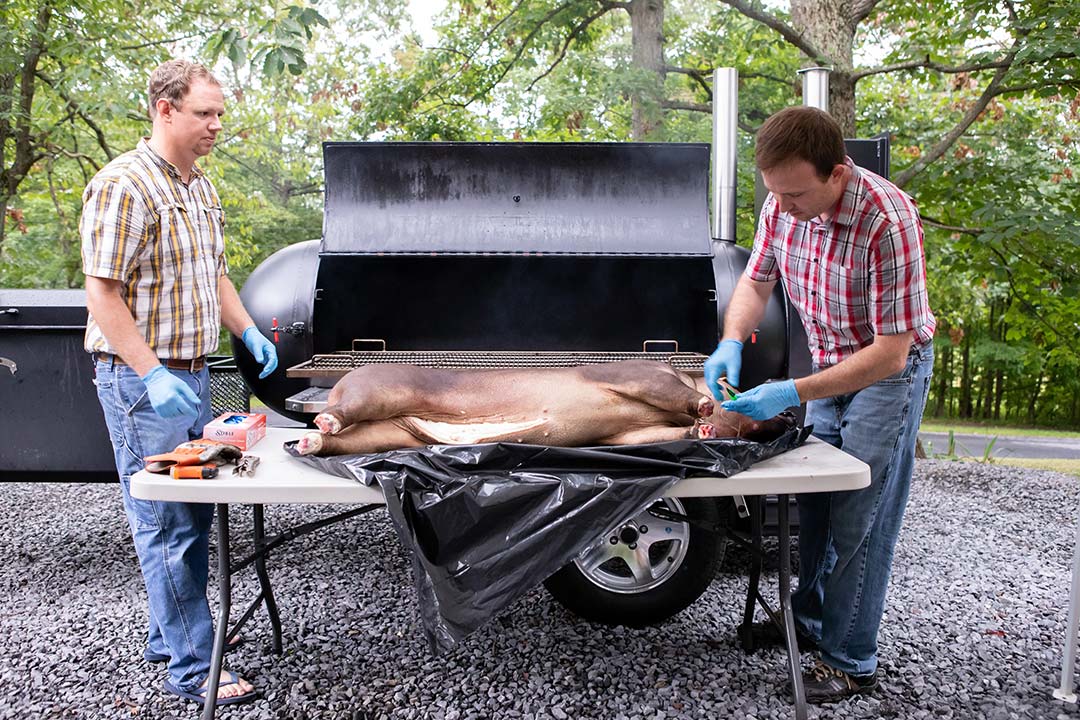
Removing the bag and strings attached to the legs
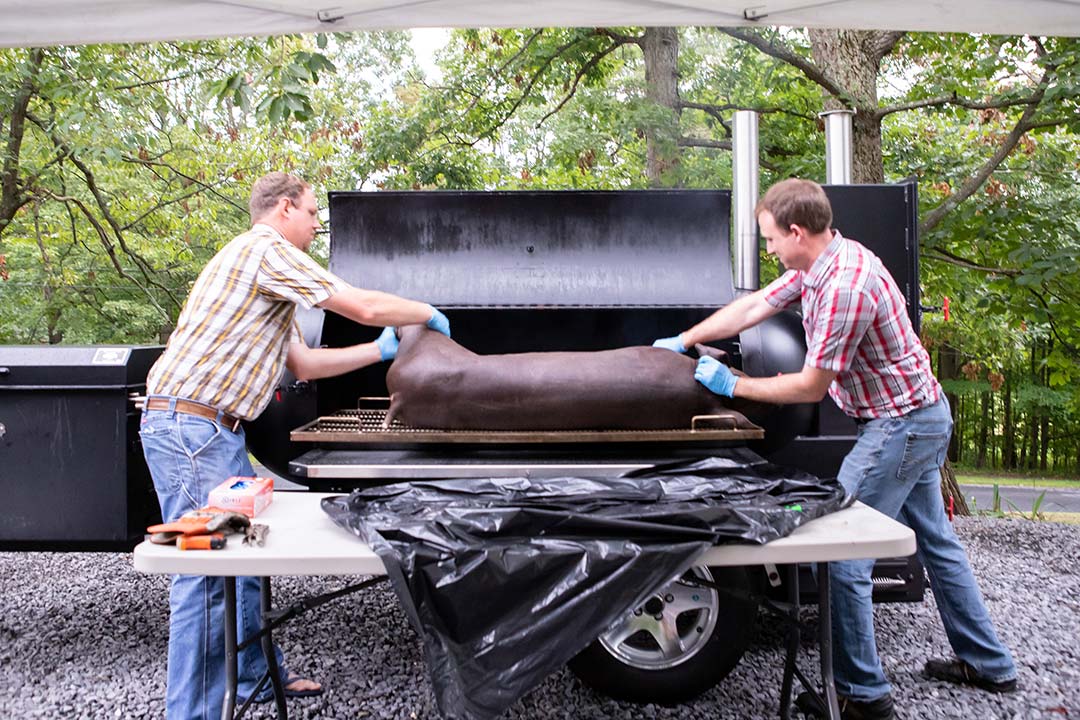
Wrestling the pig onto the grate

In you go!
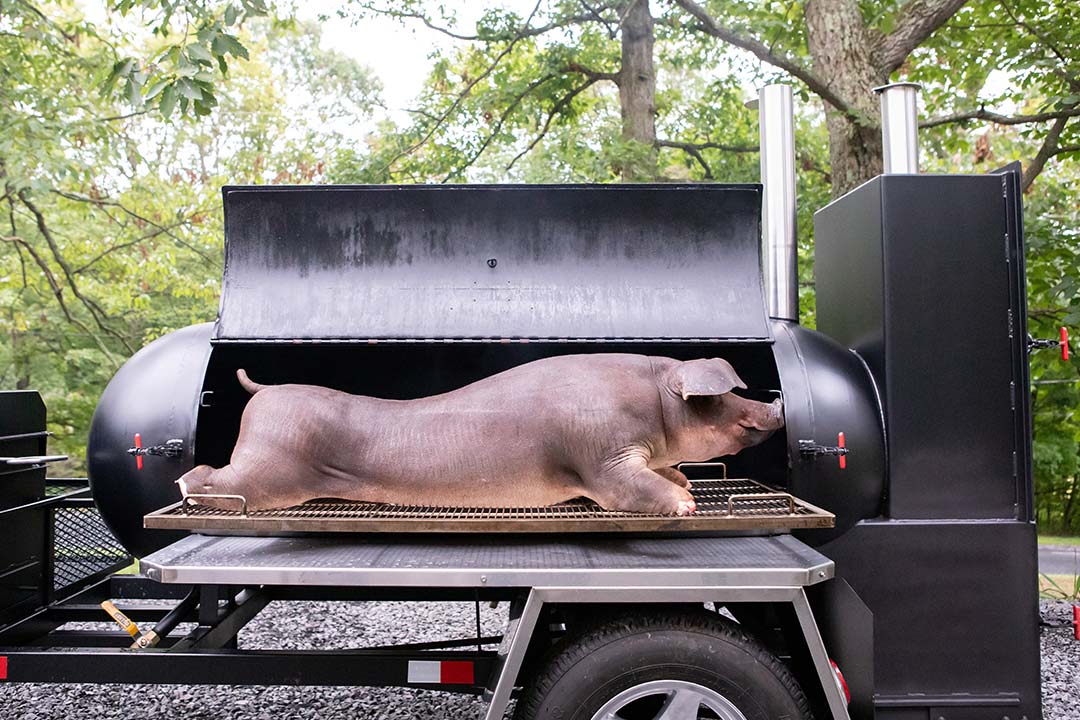
Thankfully, it fit!
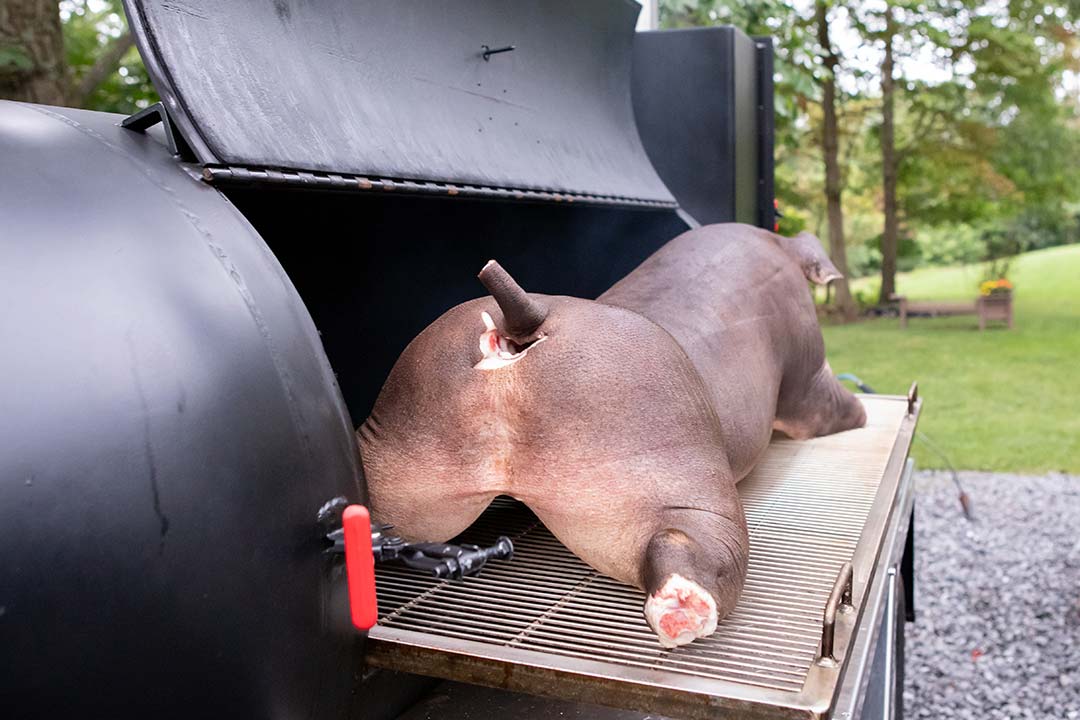
The sliding grate makes it easy to access the pig
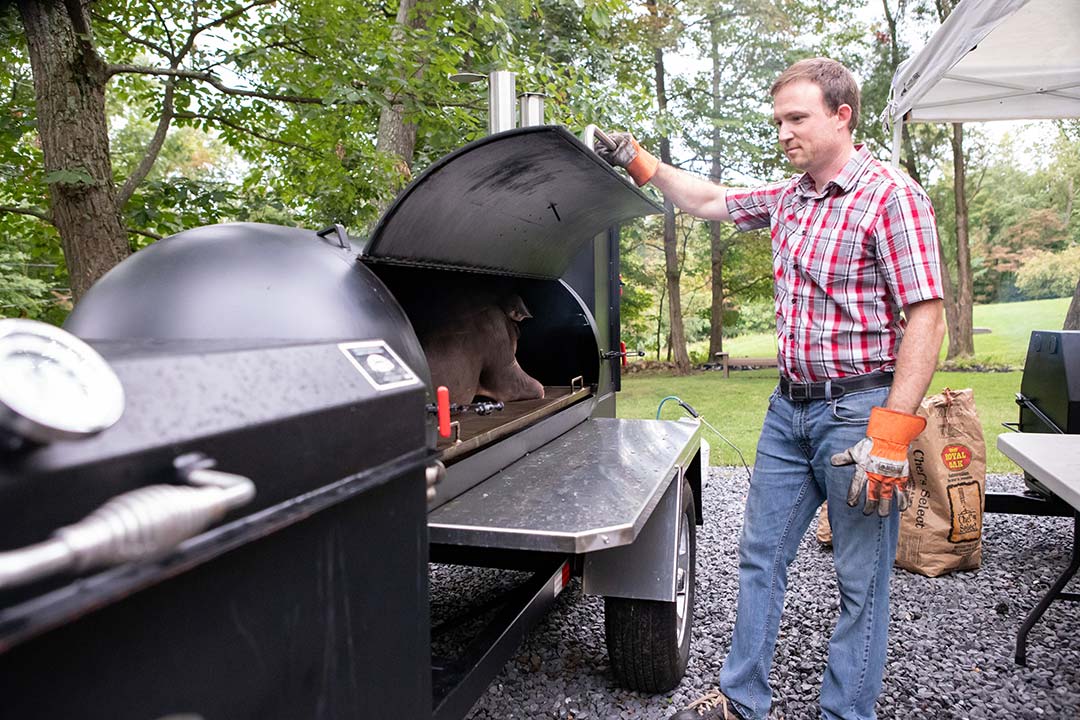
Ready to roll!
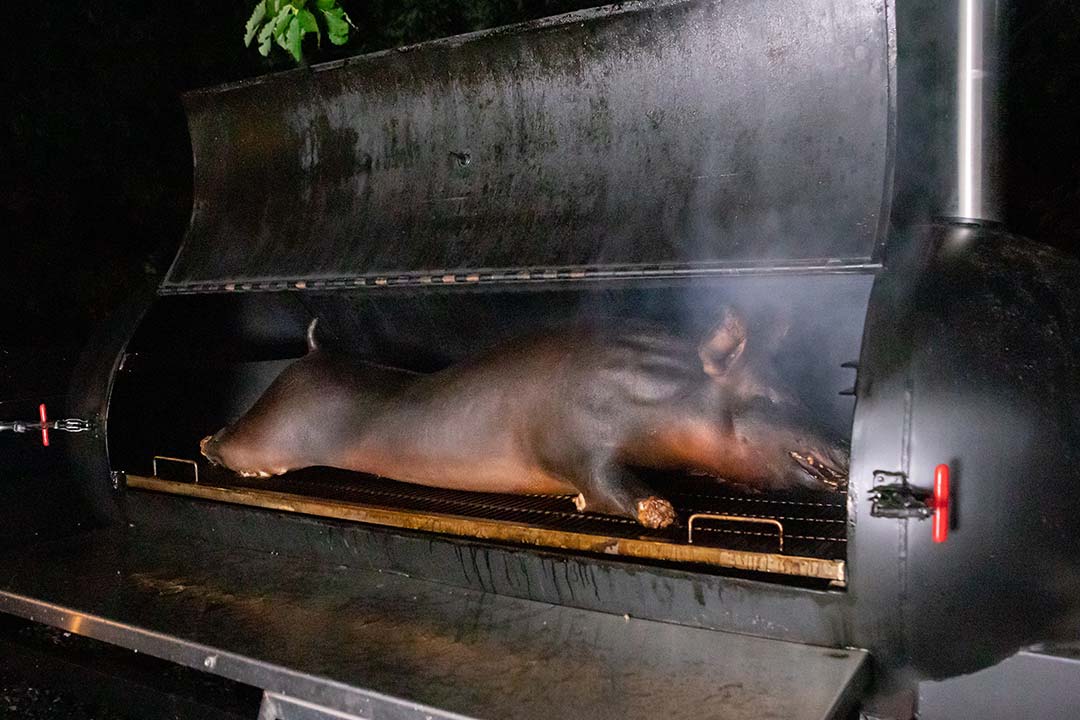
At midnight
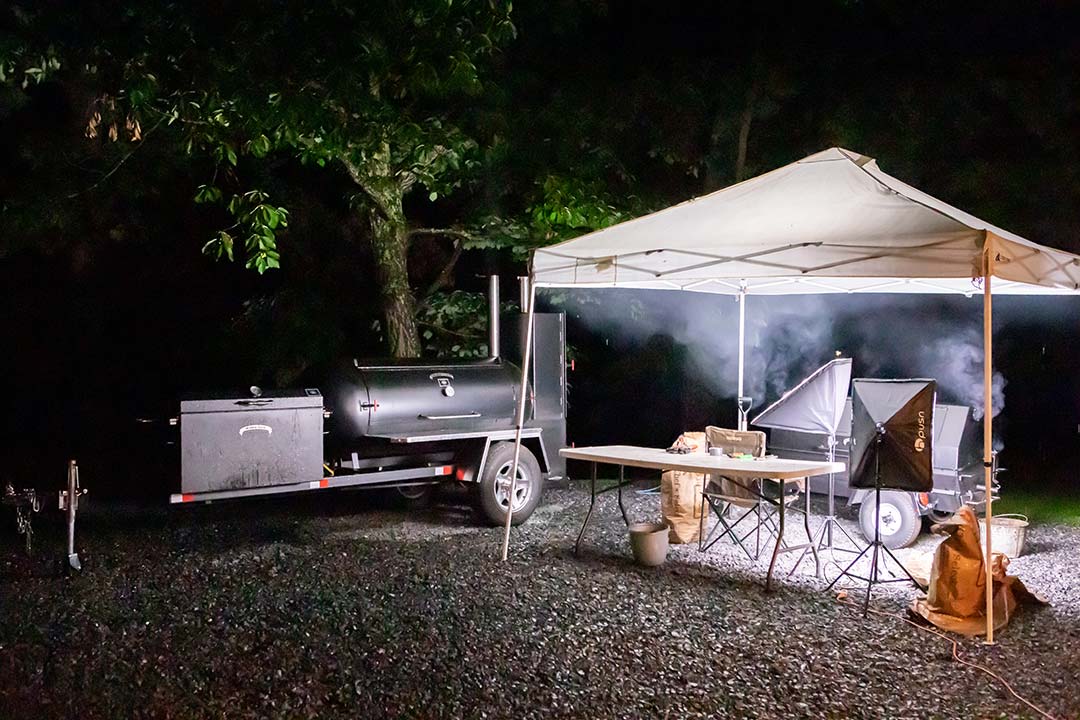
My cooking set up
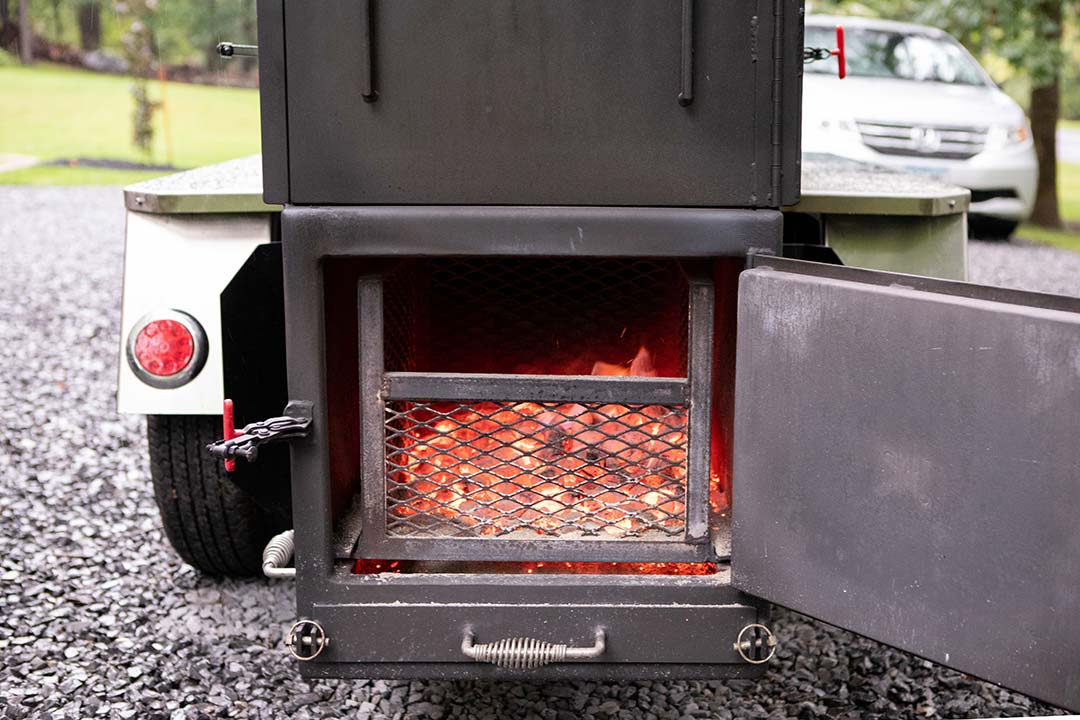
The firebox at 8:00 am
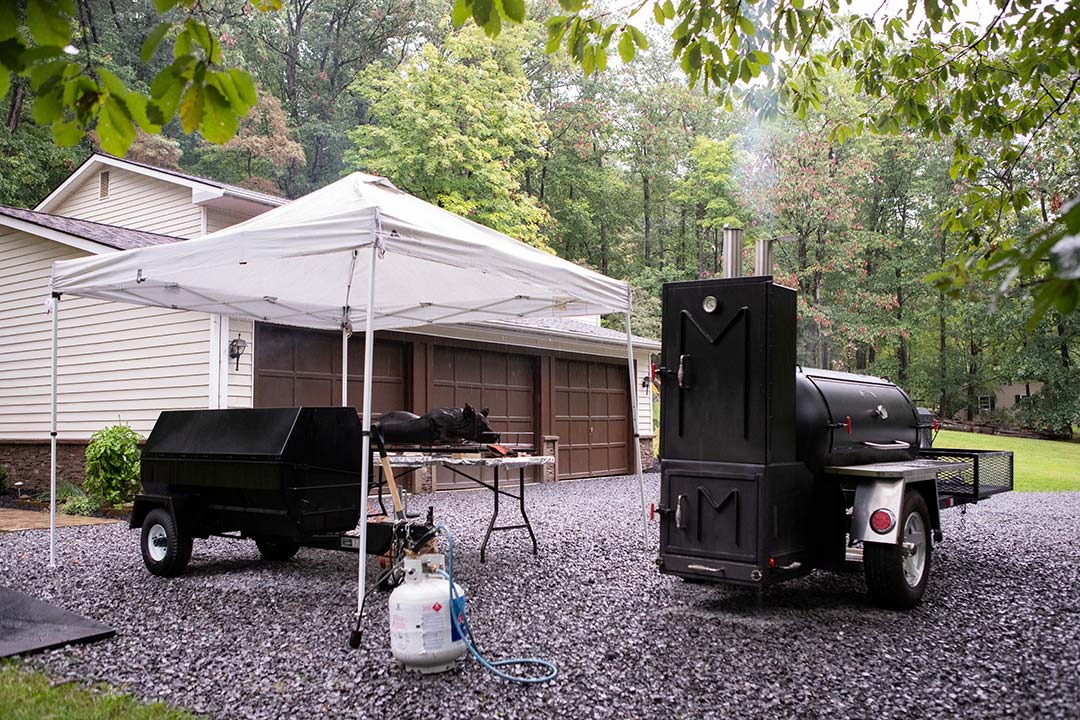
Pig #1 resting
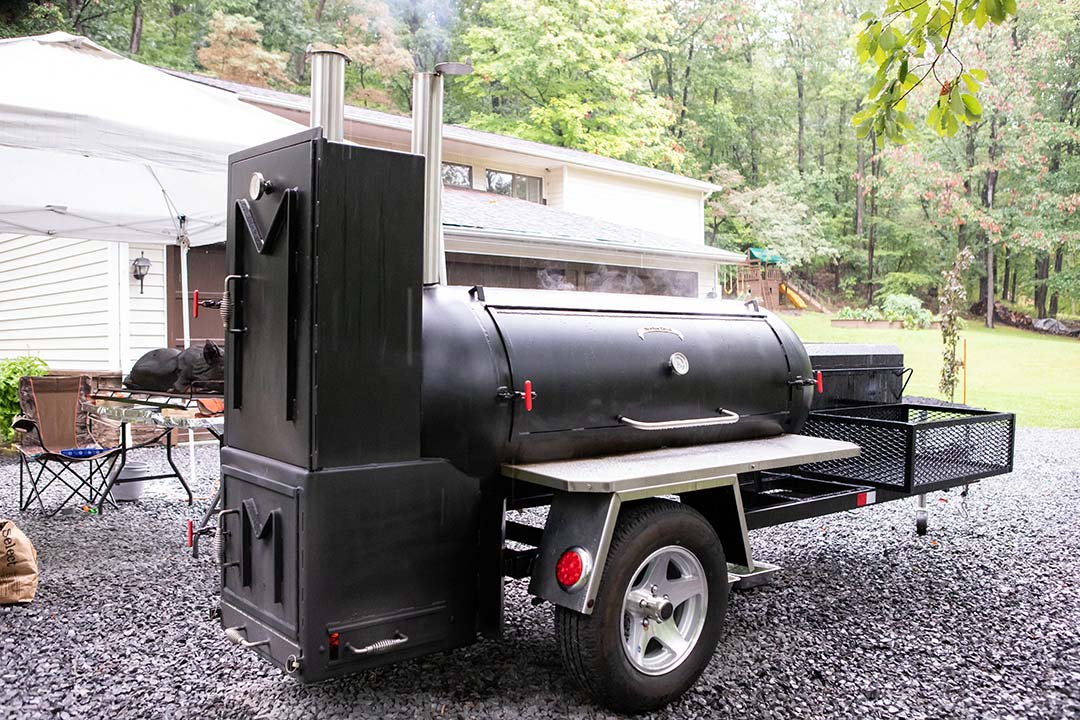
TS250 at 8:00 am
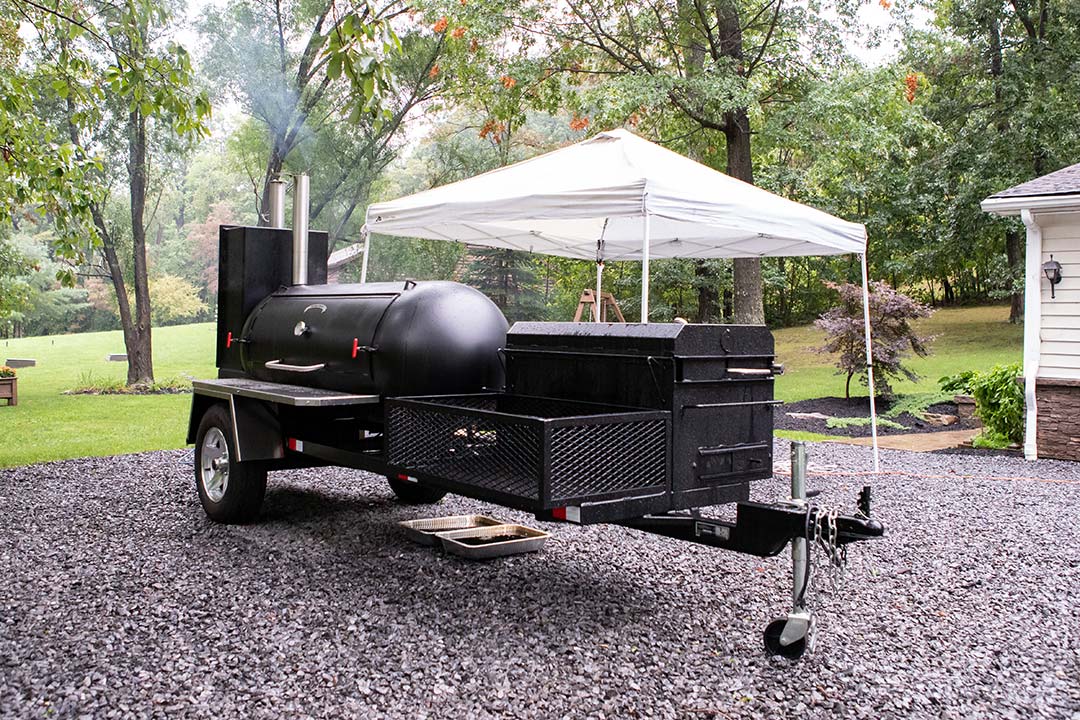
My cooking site
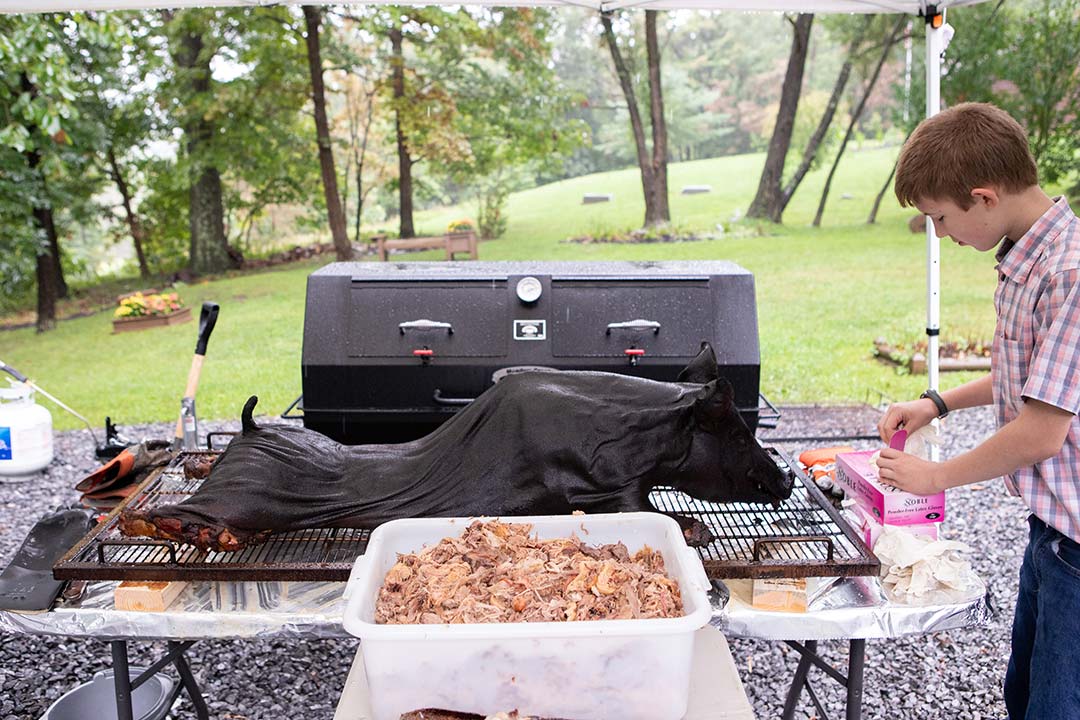
Getting ready to pull pig #2
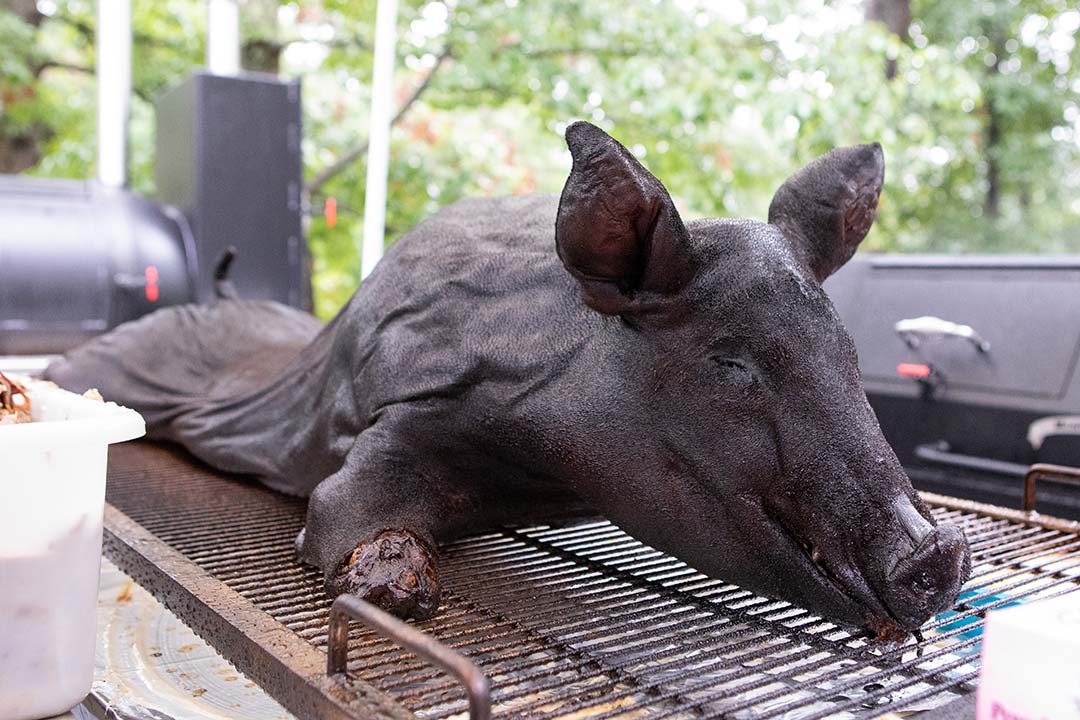
Close-up of pig #2
There are different ways to do this, but we just slit the skin and pulled the meat off of the bones, separating the meat from the fat and bones. The meat from each pig fit into one meat lug, but we split the meat into two lugs to shred it with a Ro-man pork puller. To pick up the flavor, I dusted it with barbecue rub while it was still warm, then mixed the meat. My friend plans to add his own sauce or gravy.
The meat from both pigs turned out nice! A thin layer of the belly meat was dried out, but otherwise it seemed fine.
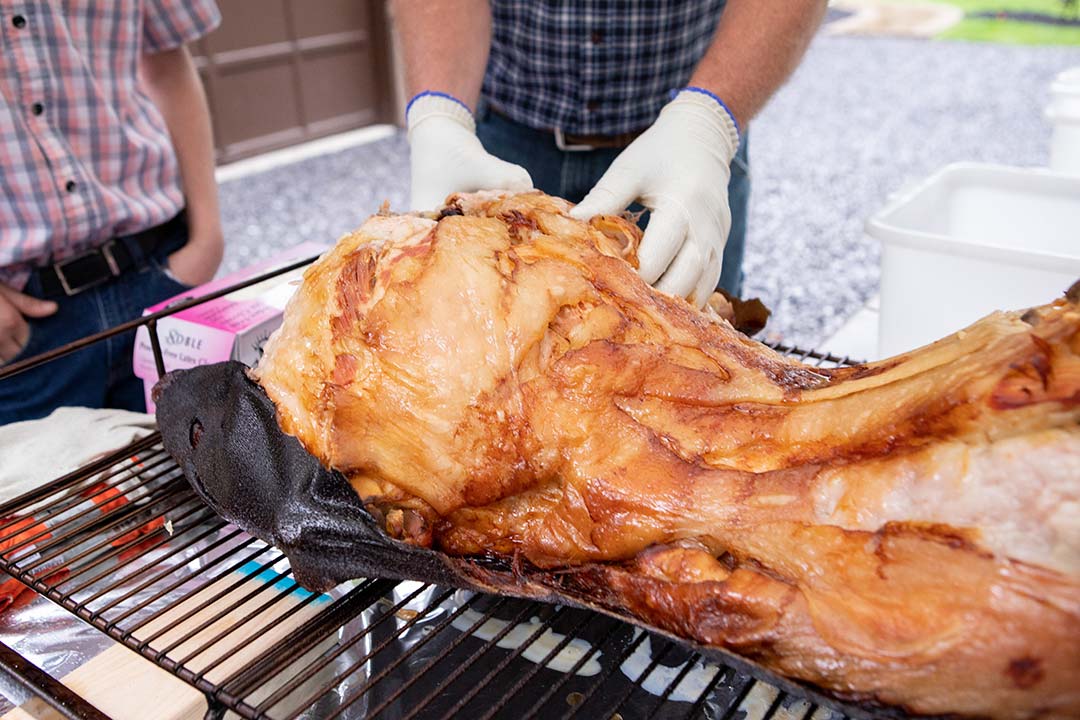
Rear of the pig
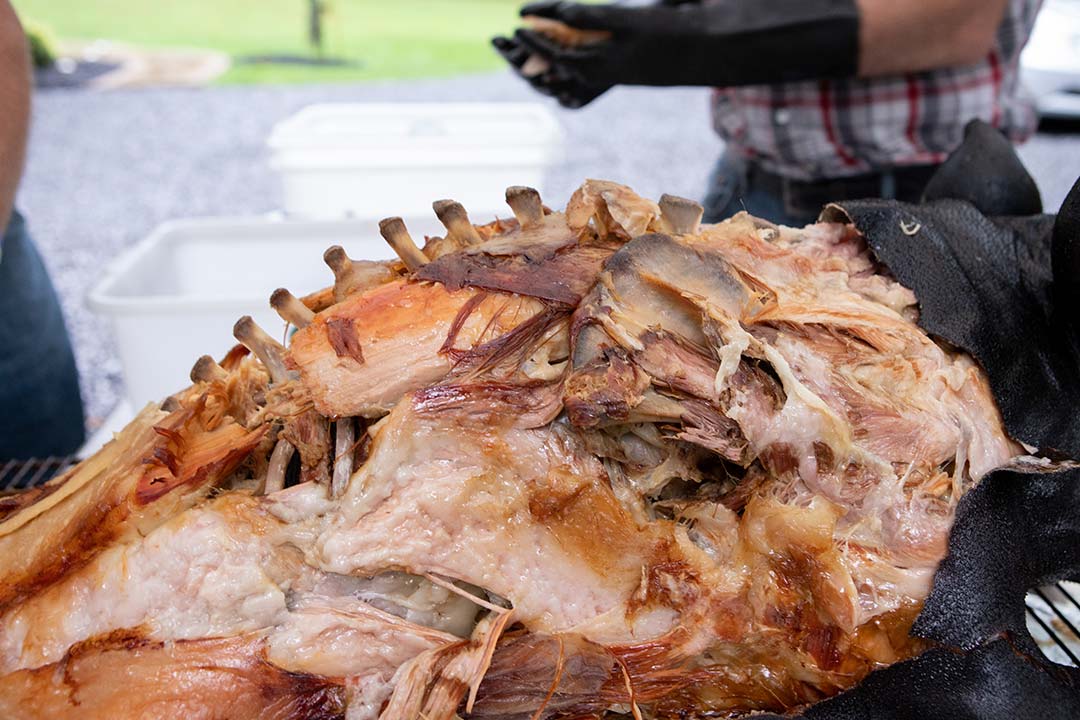
Shoulders
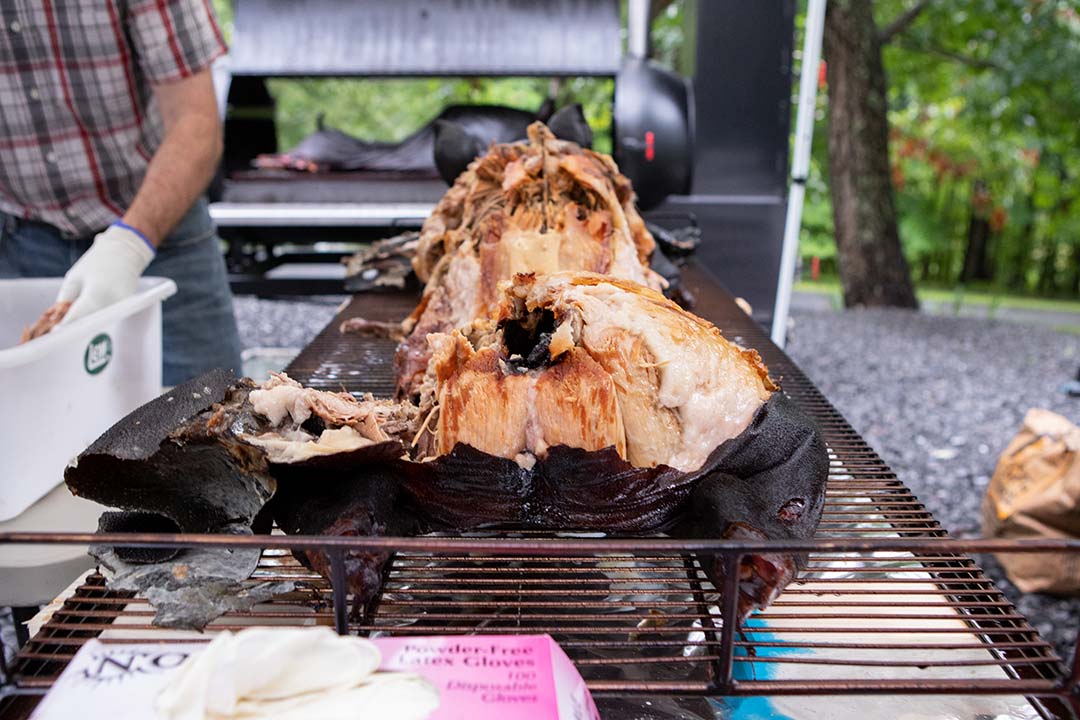
Pig #1 with pig #2 resting in the cooled down tank smoker
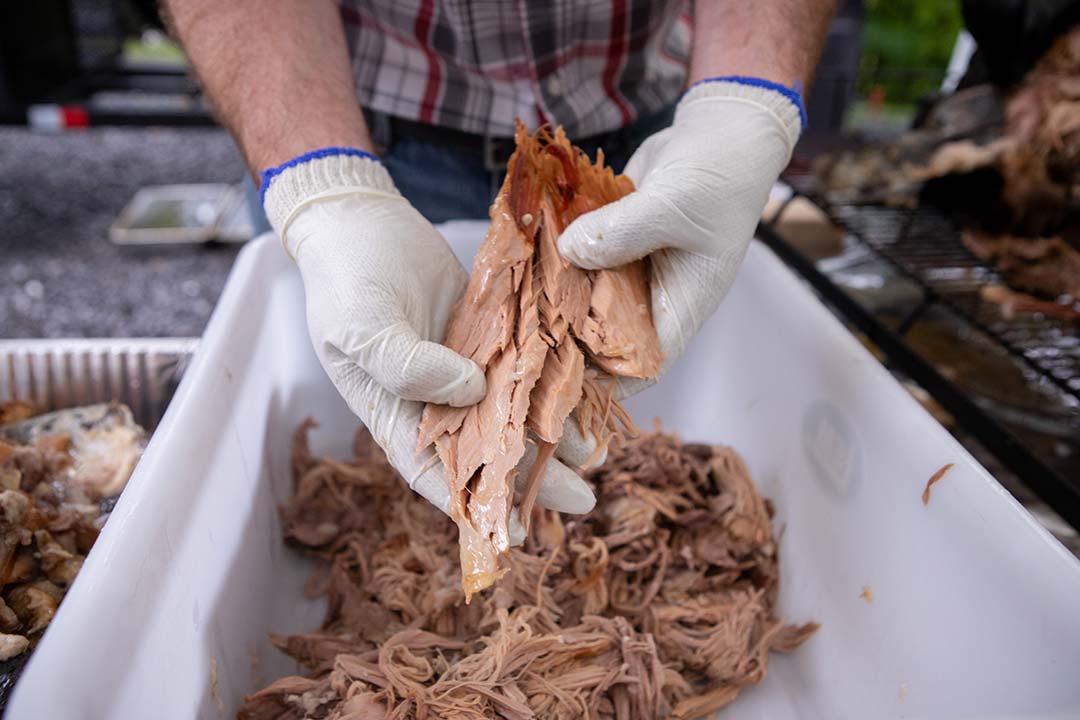
Pulling the meat
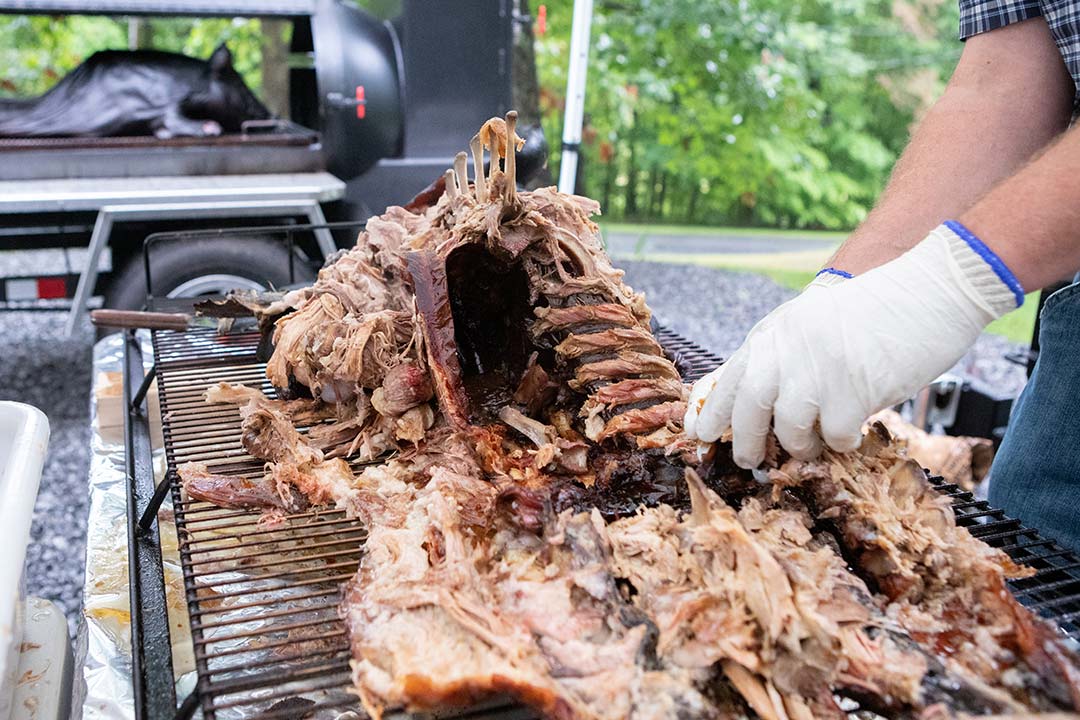
Pulling pig #1
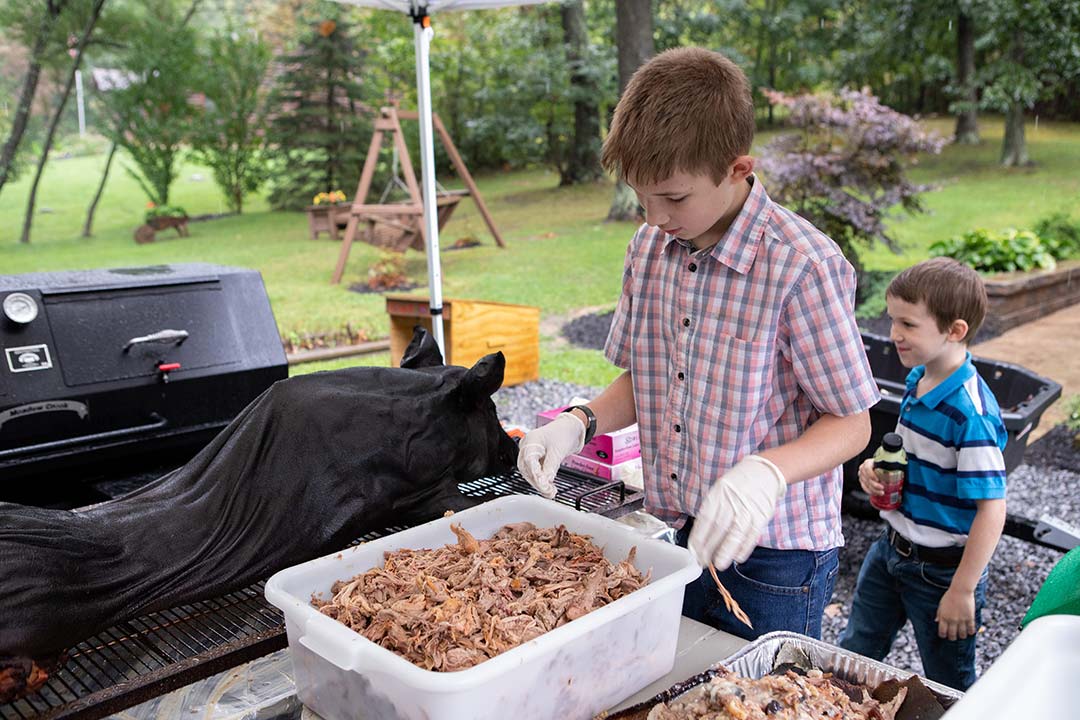
Meat from the first pig ready to bag
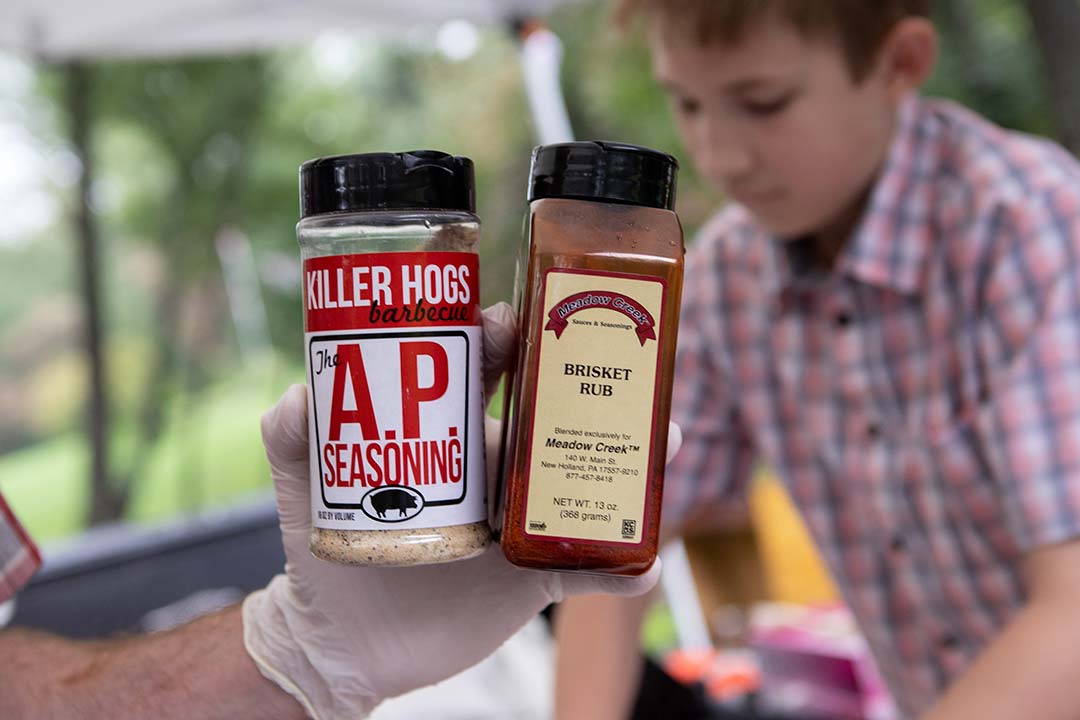
I used Meadow Creek Brisket Rub and Killer Hogs The AP Seasoning to boost the flavor of the pork. My friend wanted to add his own sauce.
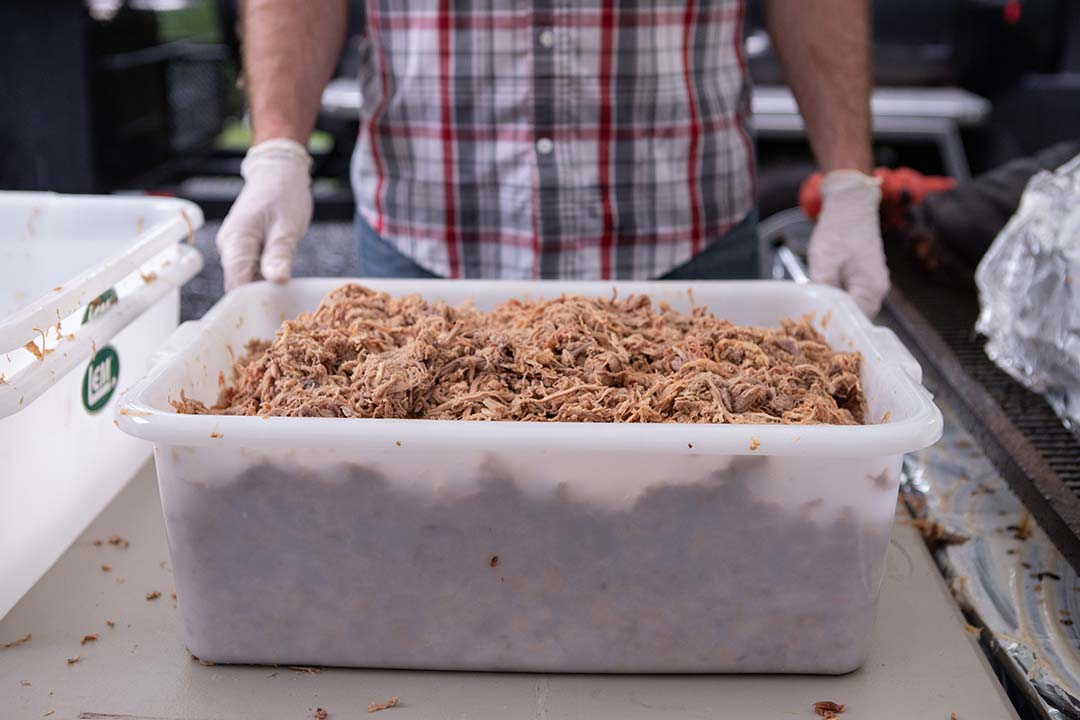
A lug full of pulled pork from pig #1
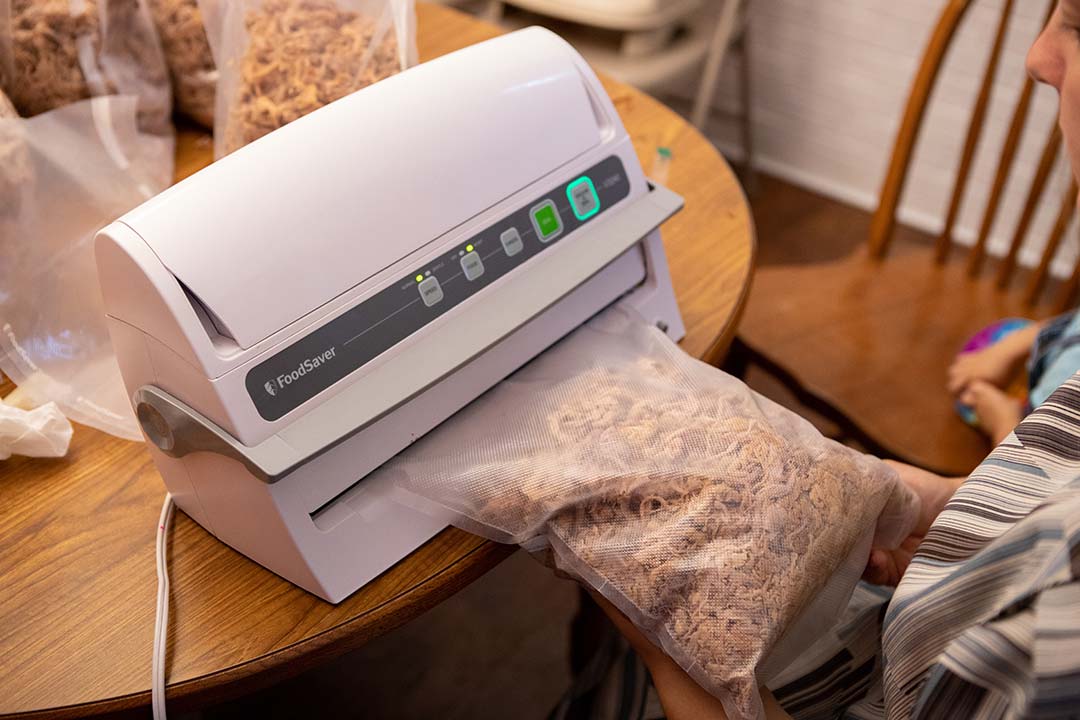
Sealing the pulled pork in 5-pound bags
I hope you enjoyed hearing about my adventures of cooking two whole pigs at night in the rain using two very different cookers. You may be wondering, so which of these smokers is the best one to use for roasting a whole pig?
The PR60T is definitely the easier way to cook a whole pig. As you saw above, the PR60 still had a bunch of unused charcoal after a 13-hour cook and with a bit of practice you could sleep all night without adjusting the vents or you could add a temperature controller for peace of mind. It does what it was designed to do—efficiently and excellently. If you are buying your first Meadow Creek cooker and plan to cook a couple of pigs a year, I would recommend going with a PR.
The TS250 does a great job too, but it requires adding new fuel every hour or two. This is not a flaw or a fault—it's the nature of an offset smoker. If you already own a TS250 and want to cook a whole pig, you should definitely use it. Unless, of course, you want to add a PR to your line-up. 🙂
If you enjoy managing an offset fire for 12–14 hours, you would enjoy cooking a whole pig in a tank smoker. In fact the cook time will be similar to cooking briskets and pork butts, depending on your method and the size of the pig.
Another thing to consider is that smaller pigs will be easier to cook on a tank smoker. For example, a 90-pound pig (dressed weight) should cook within 10 hours, so you could start one morning and serve it that evening.
Read more about how much I love my TS250 and what you can do with it in my other stories on the blog:
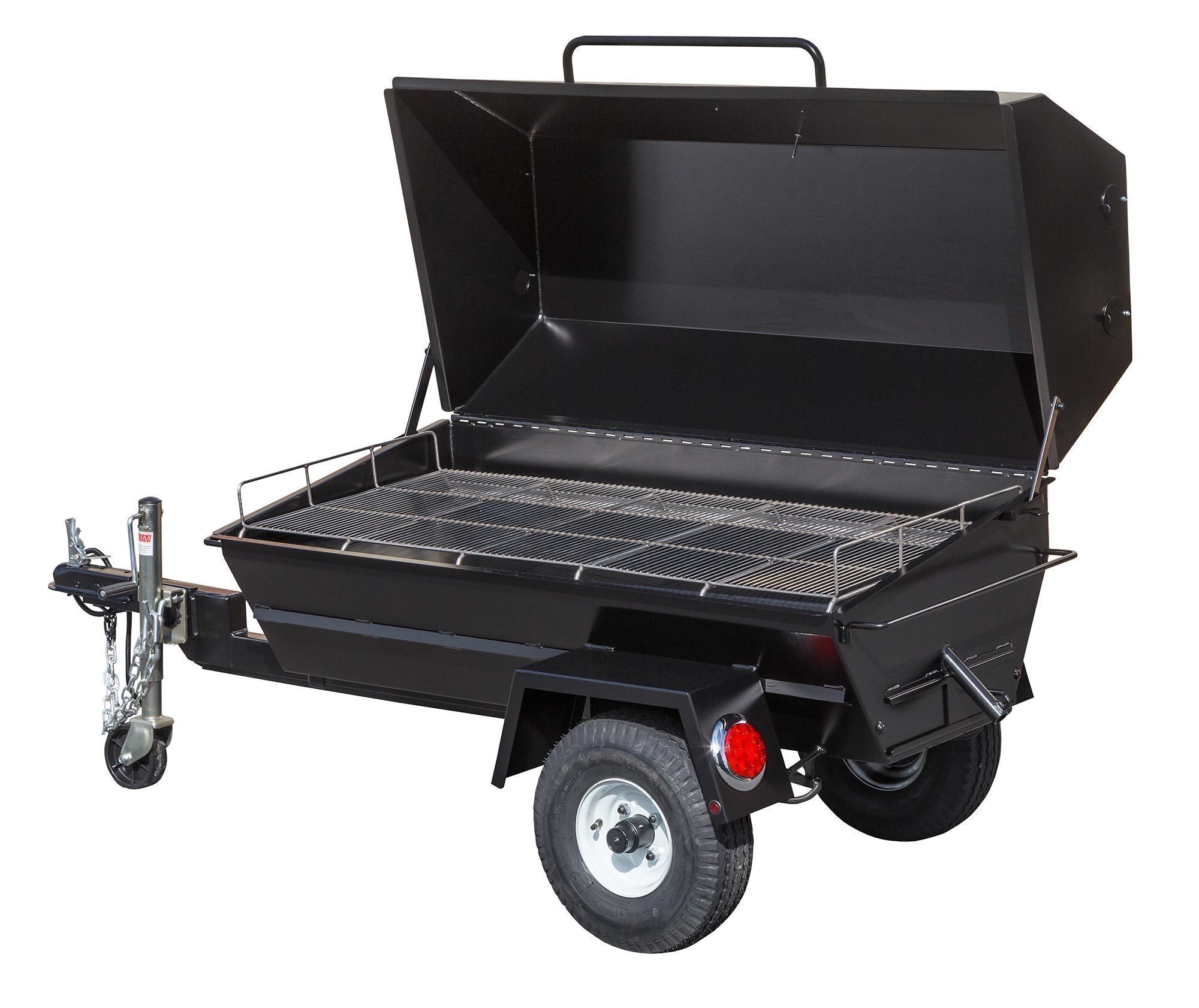
Affordable and versatile roasters
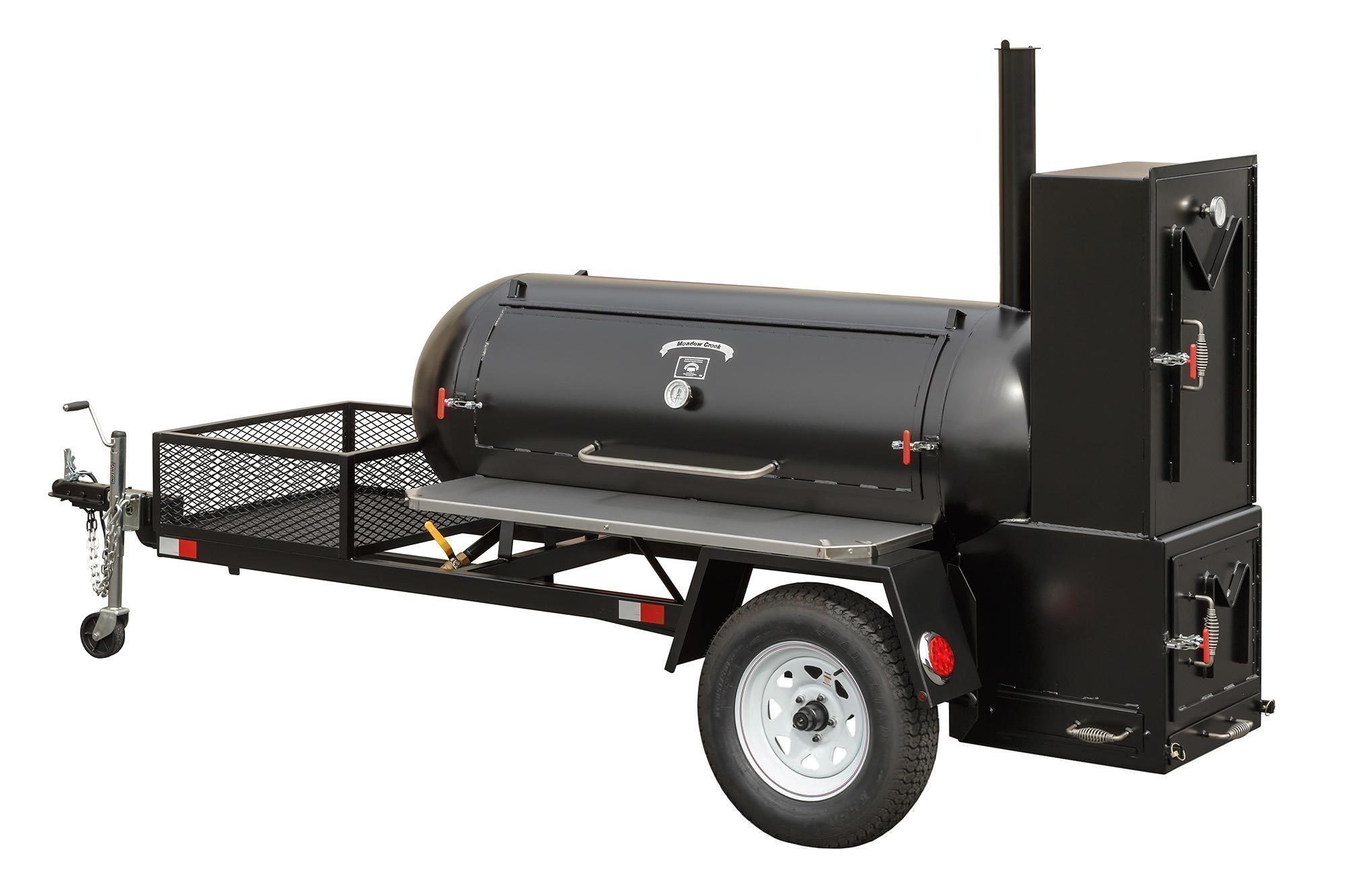
Classy reverse flow tank smokers
Tags
bbq smokers, pig roasters, pr60t pig roaster, tank smokers, ts250 tank smoker